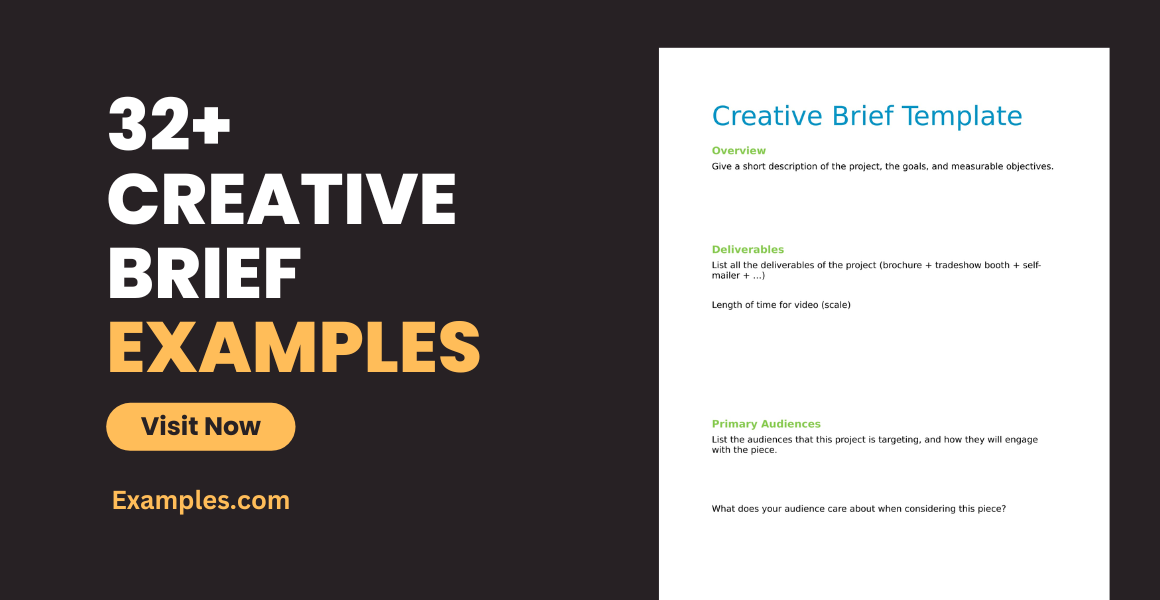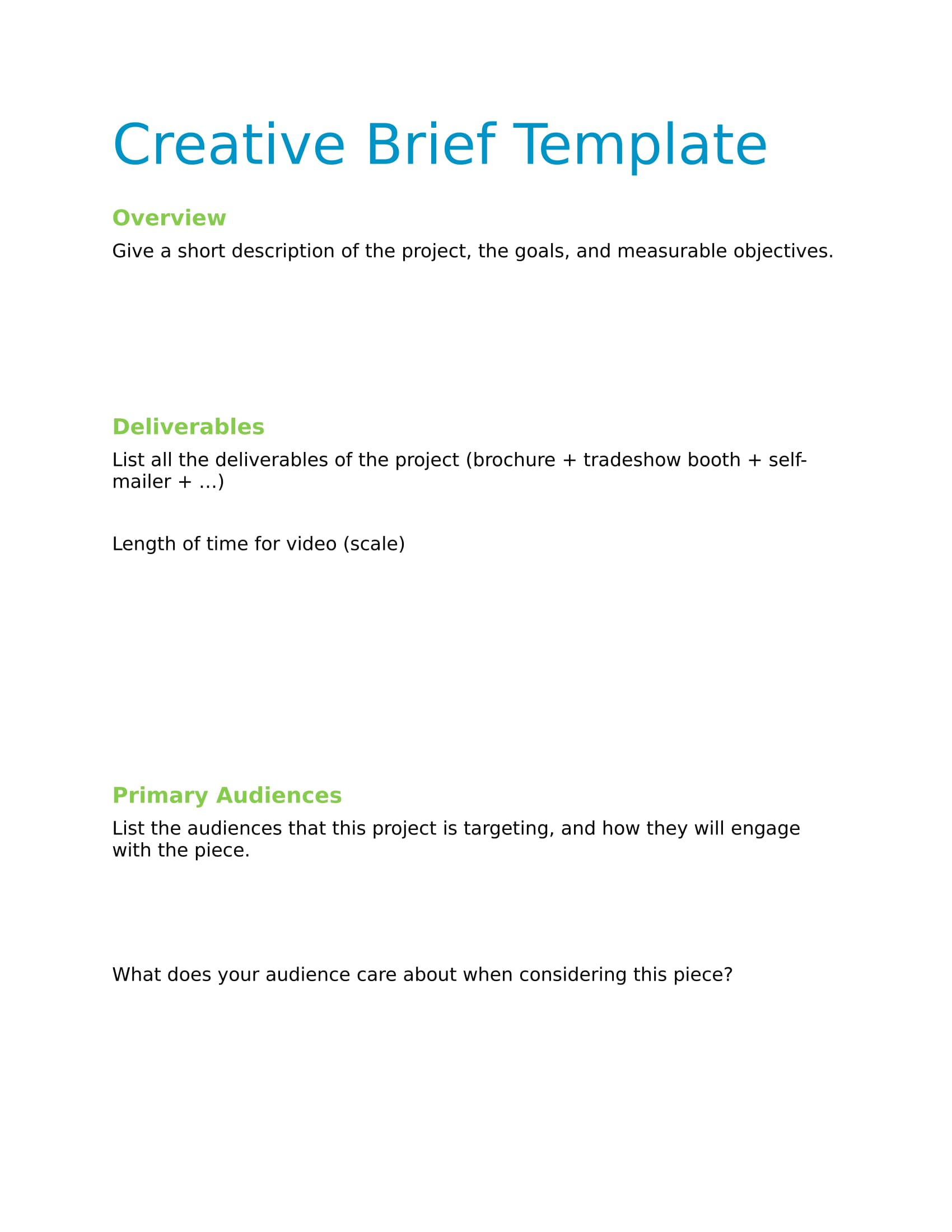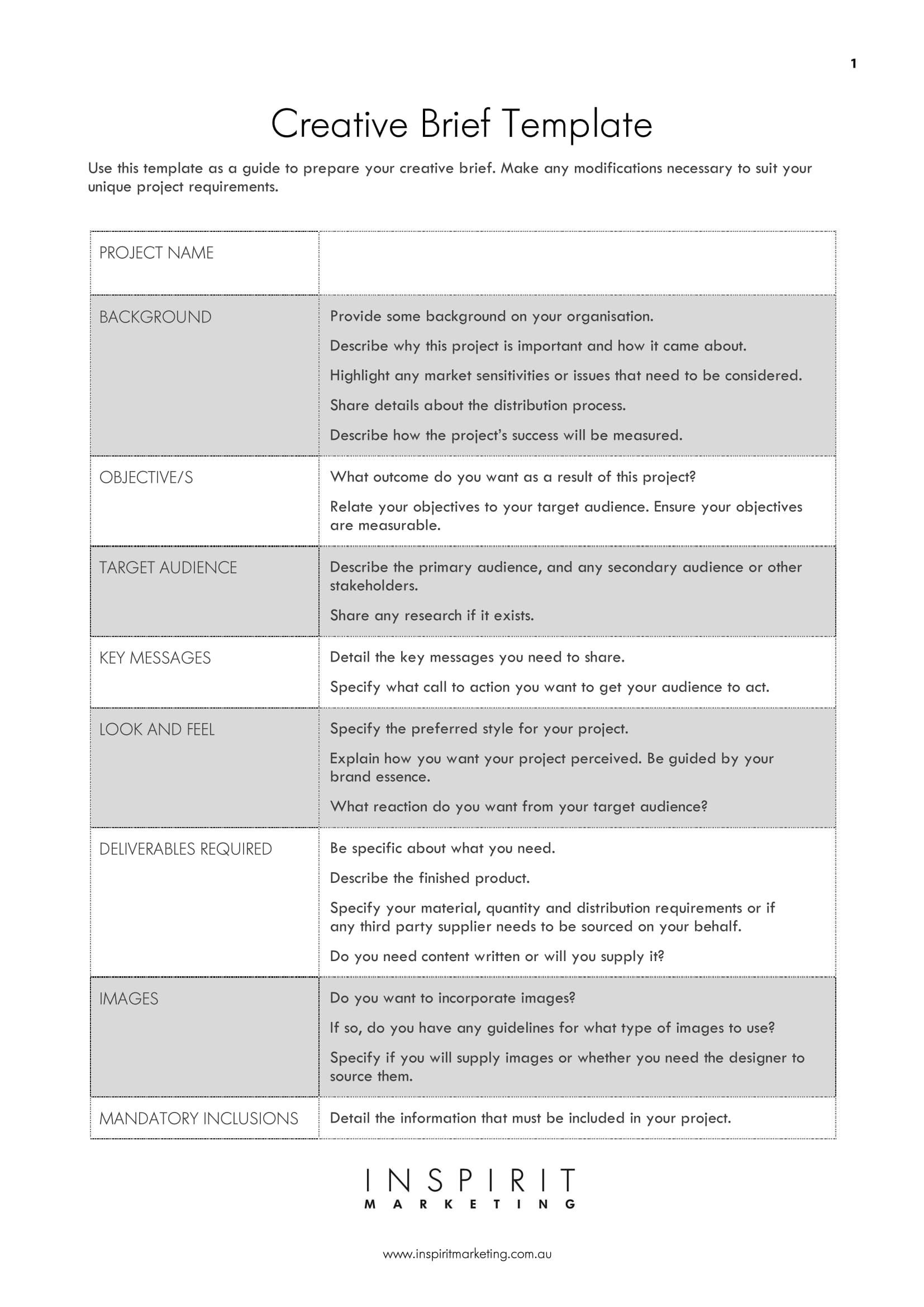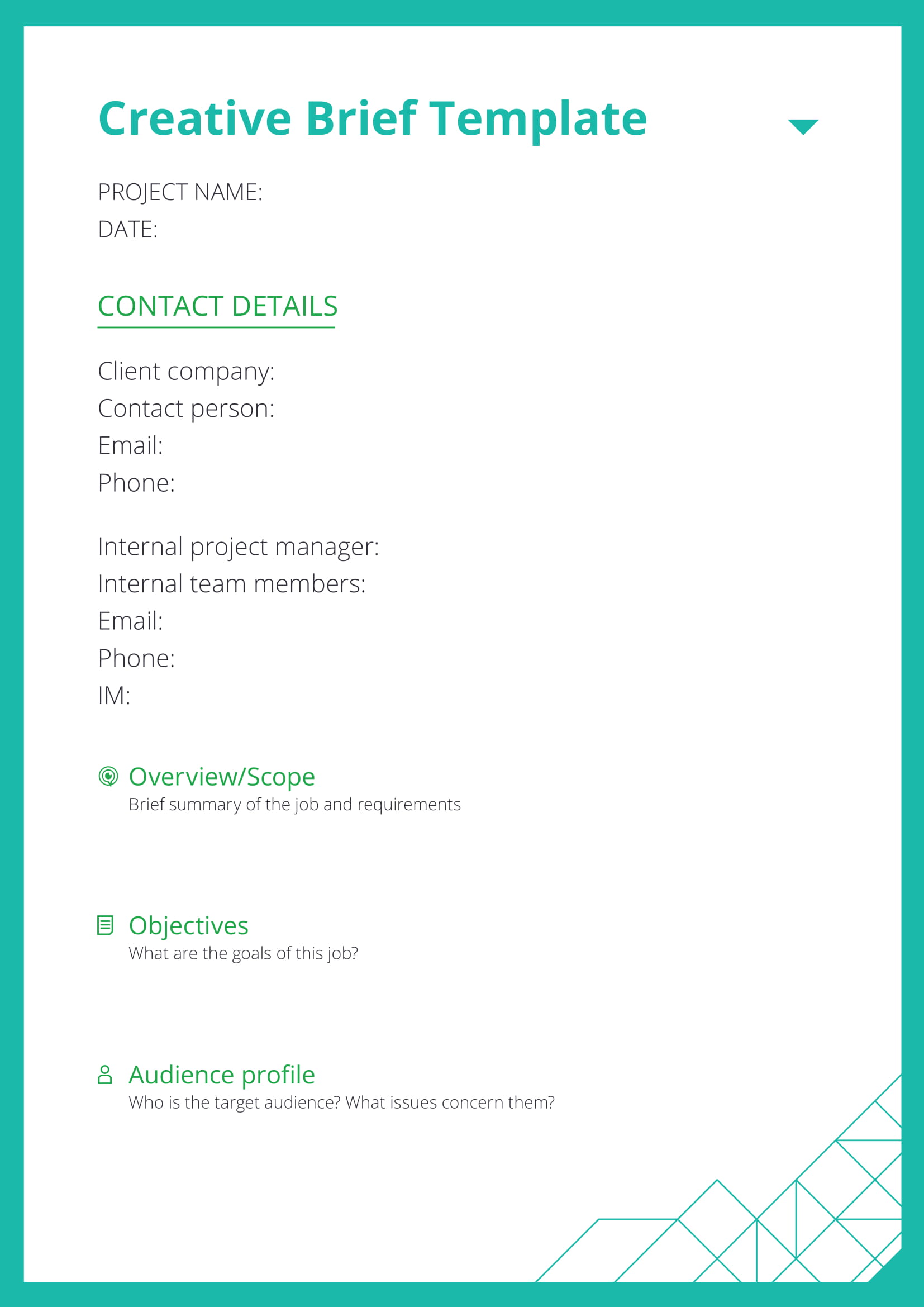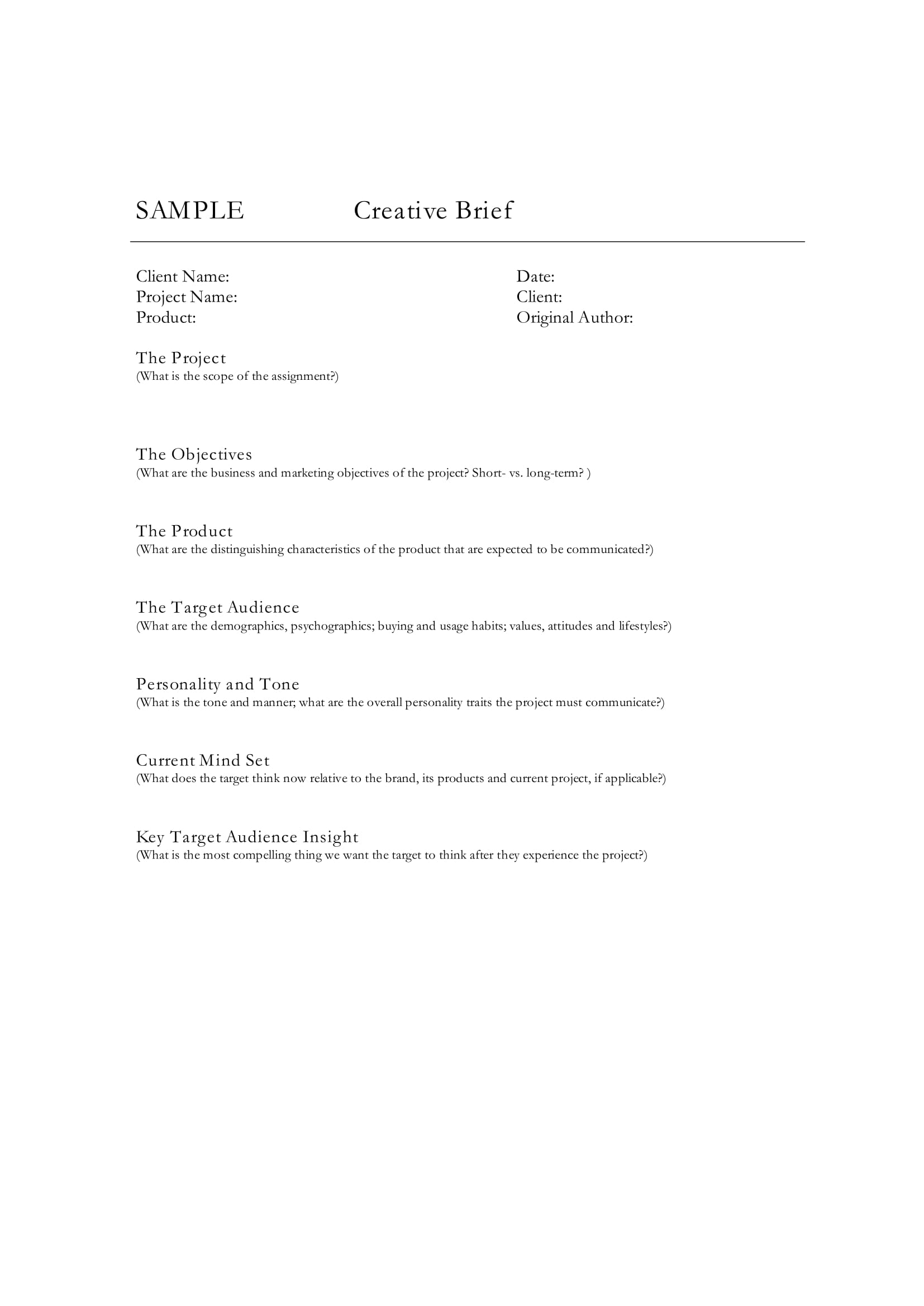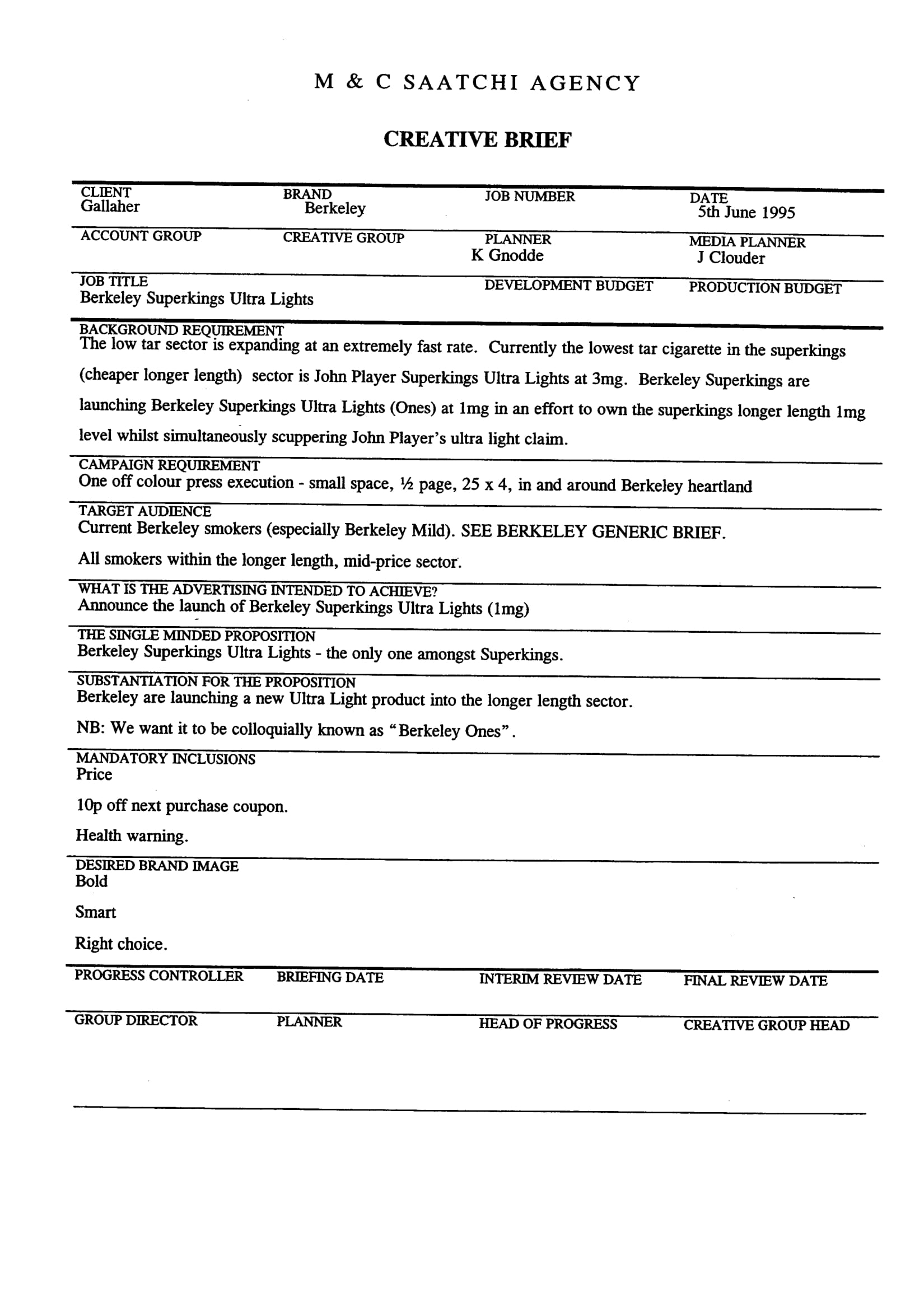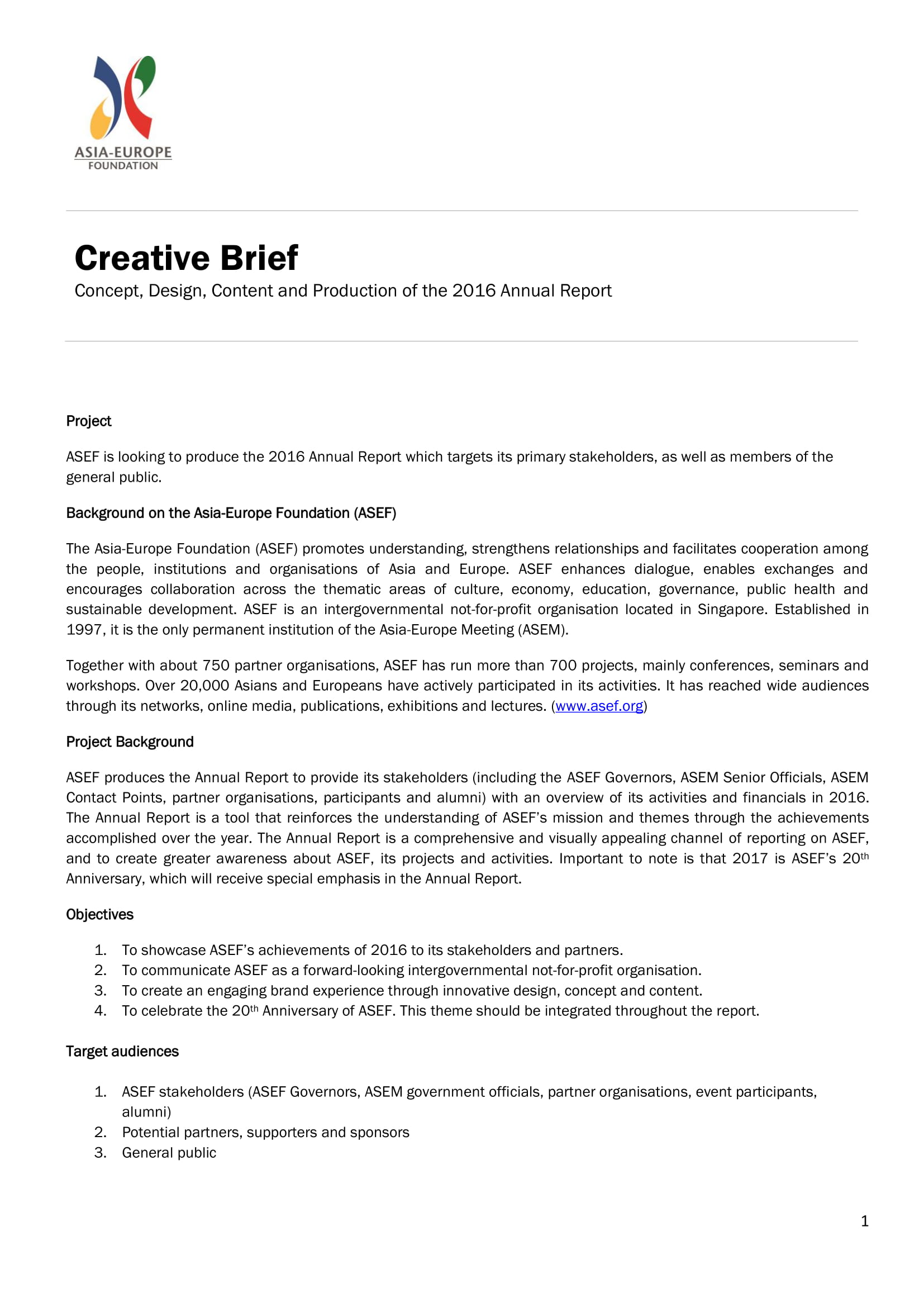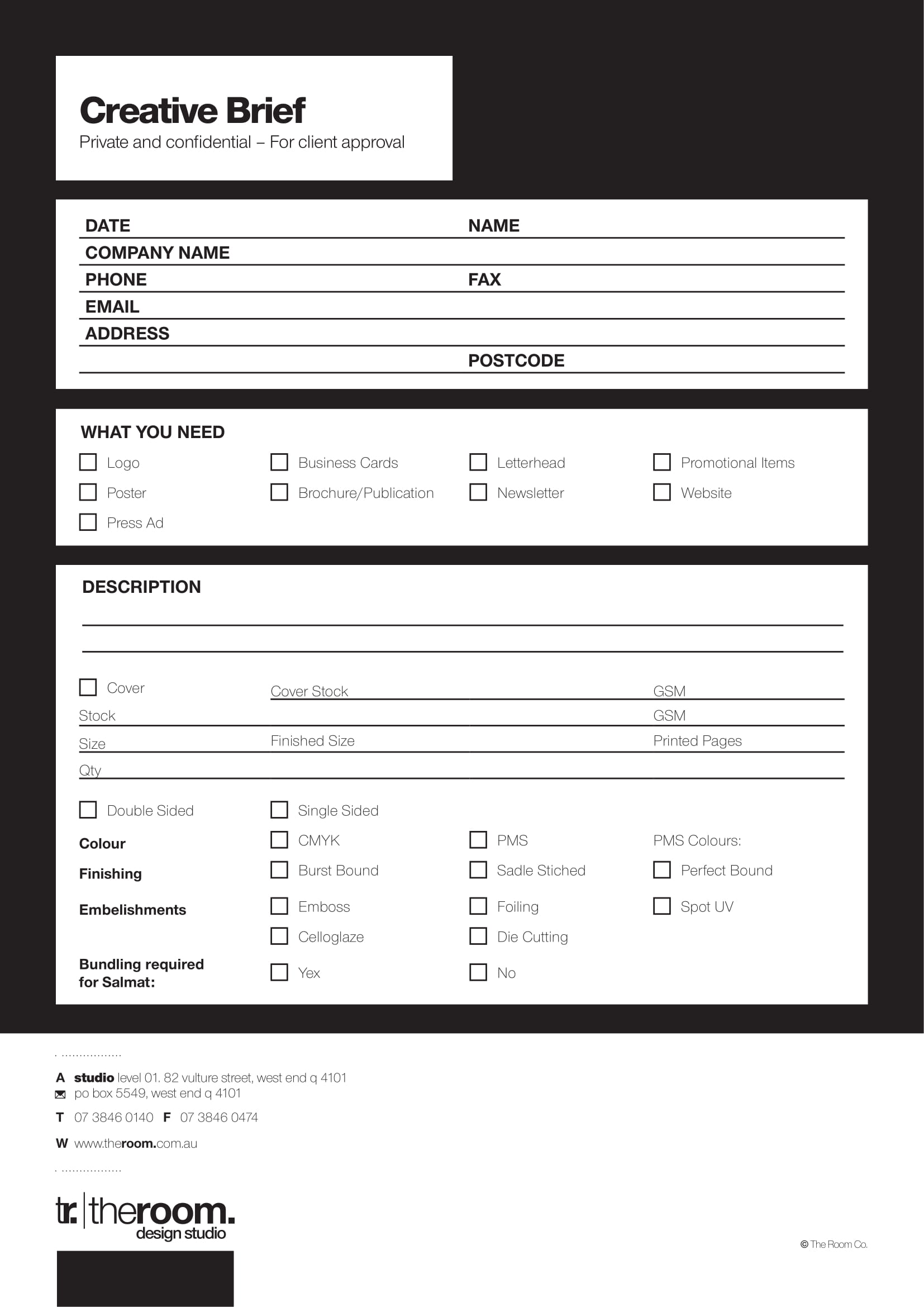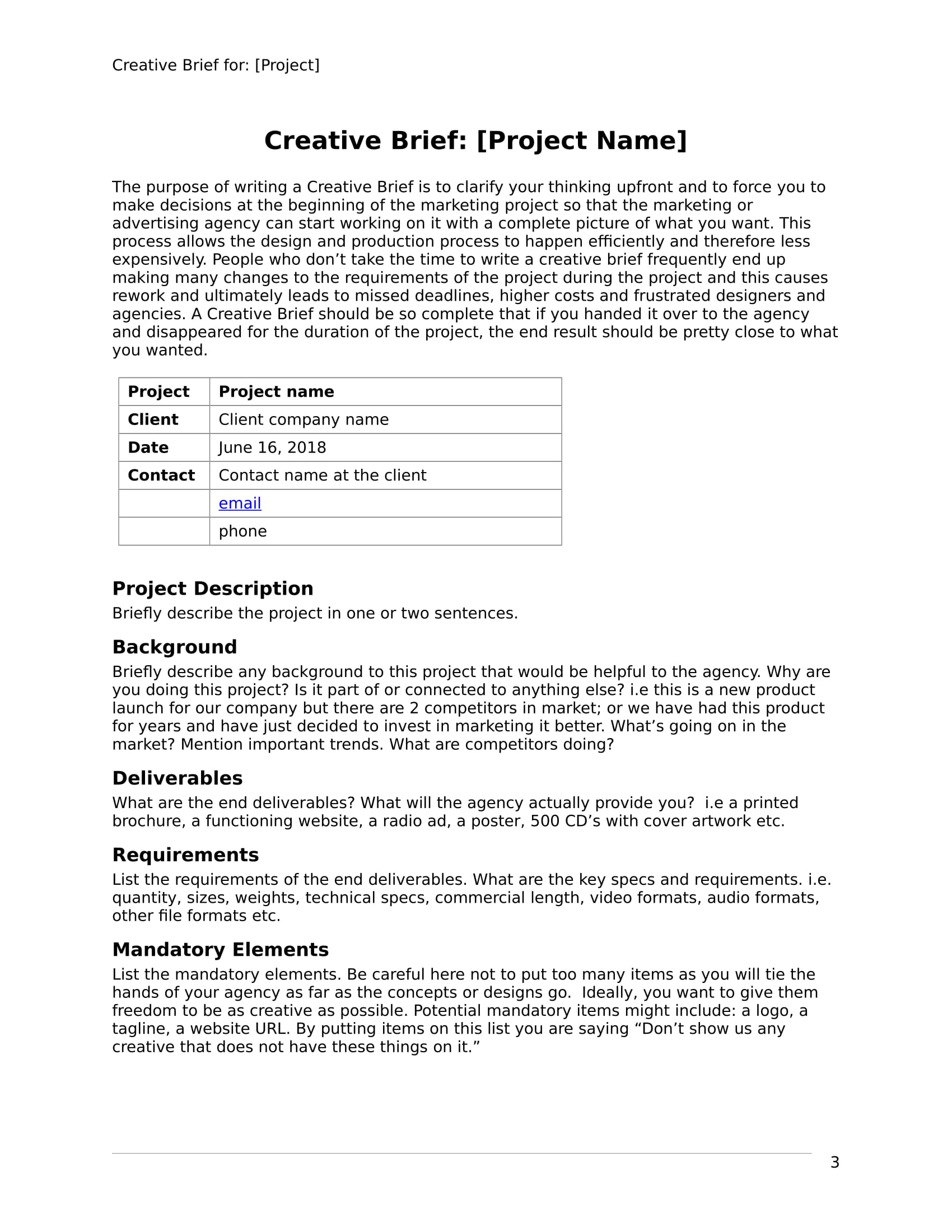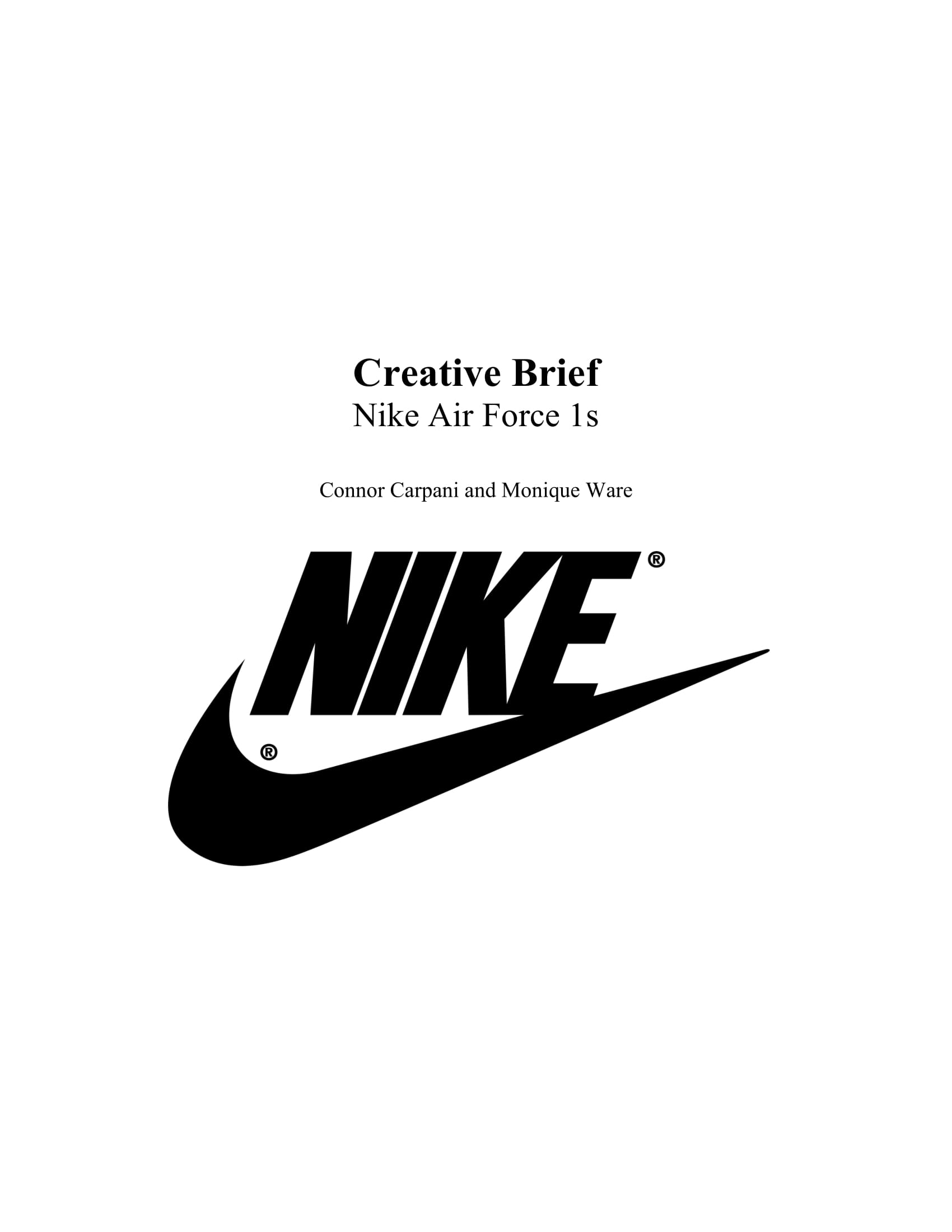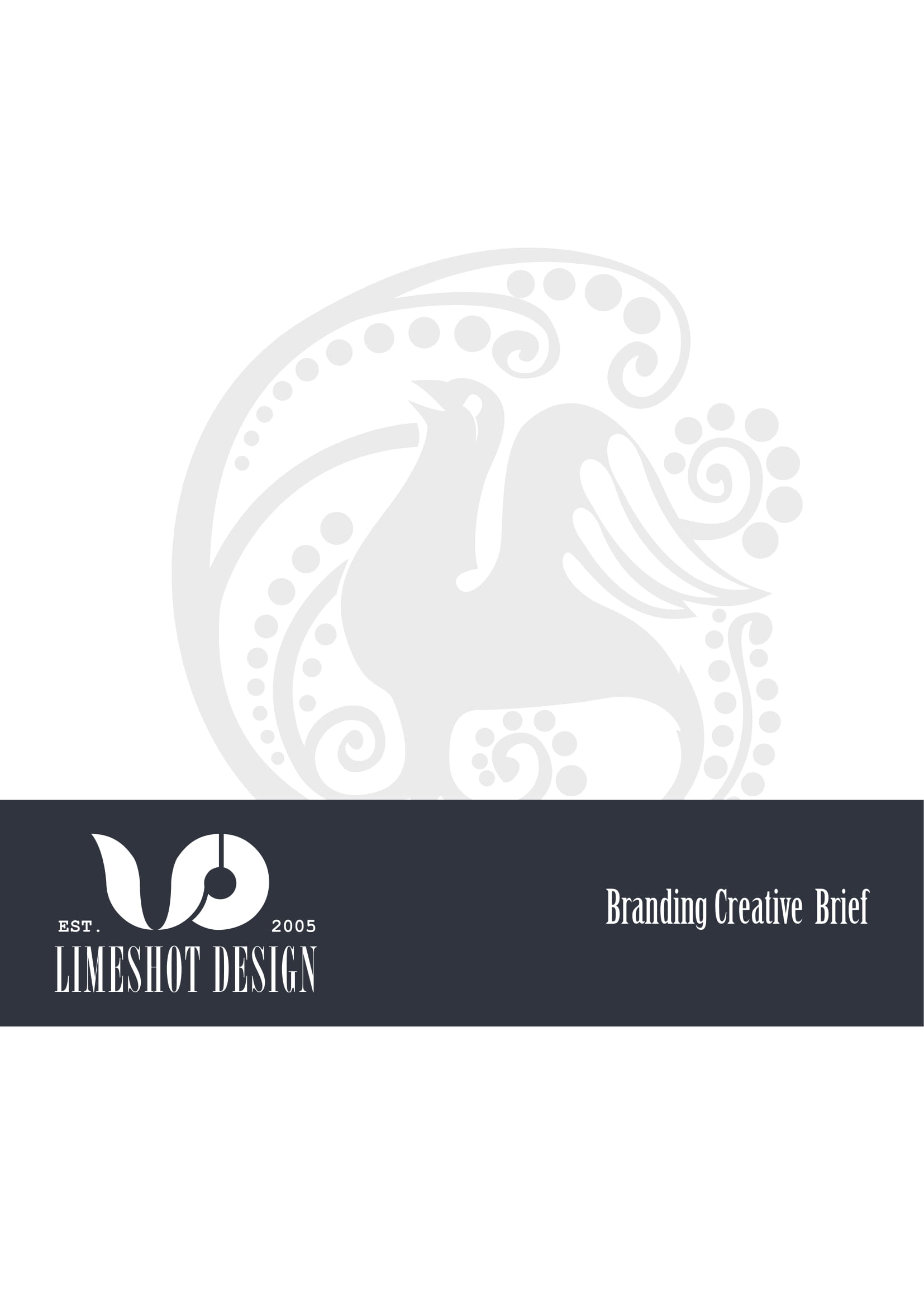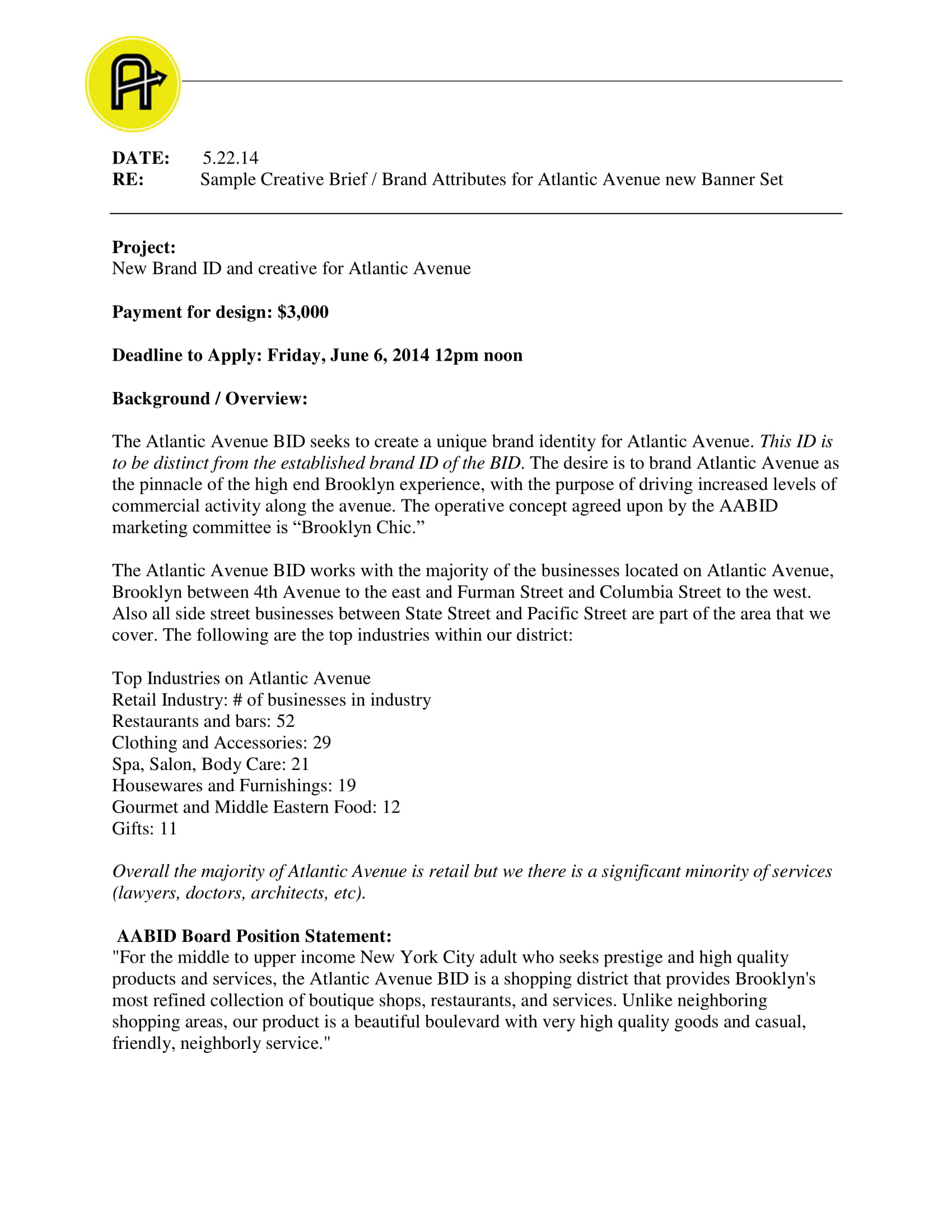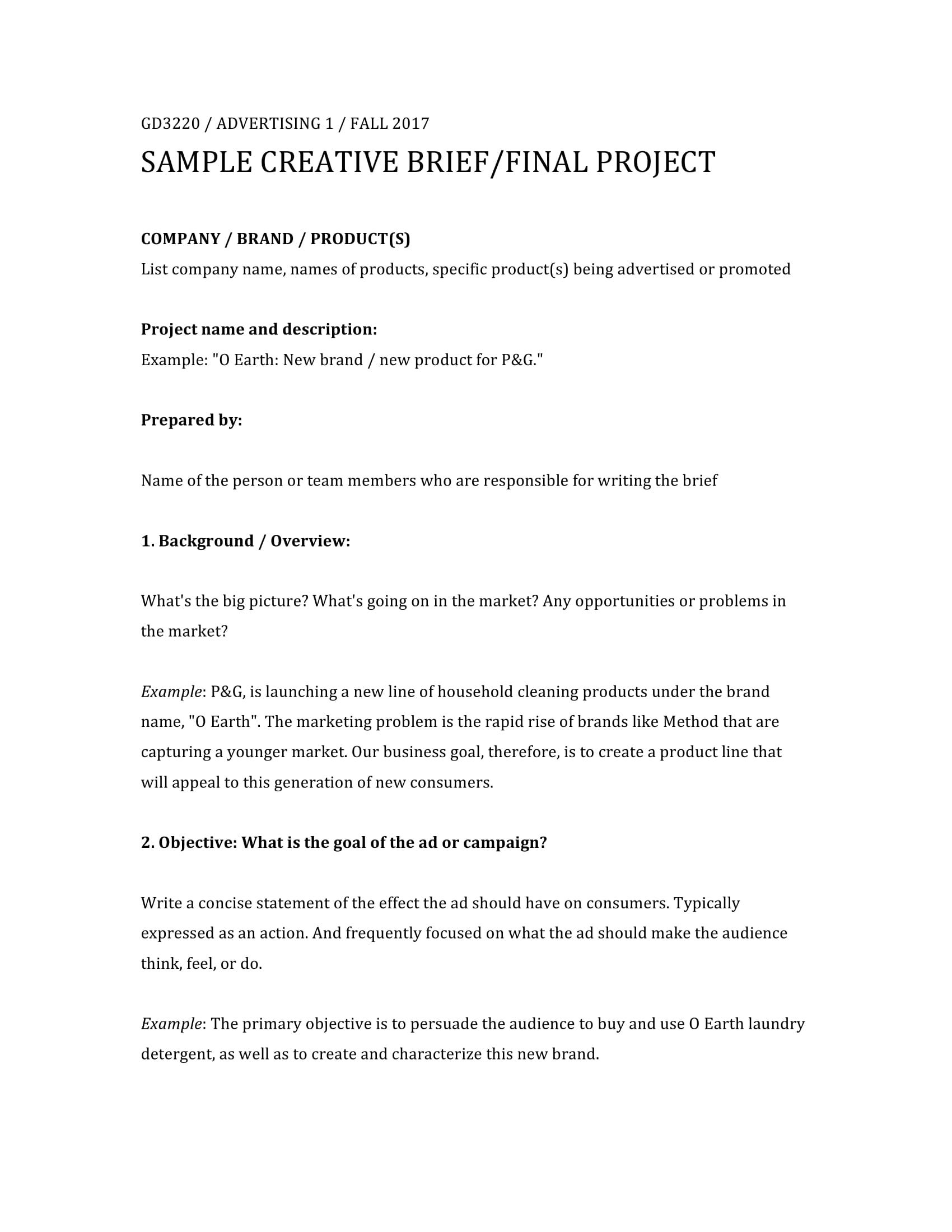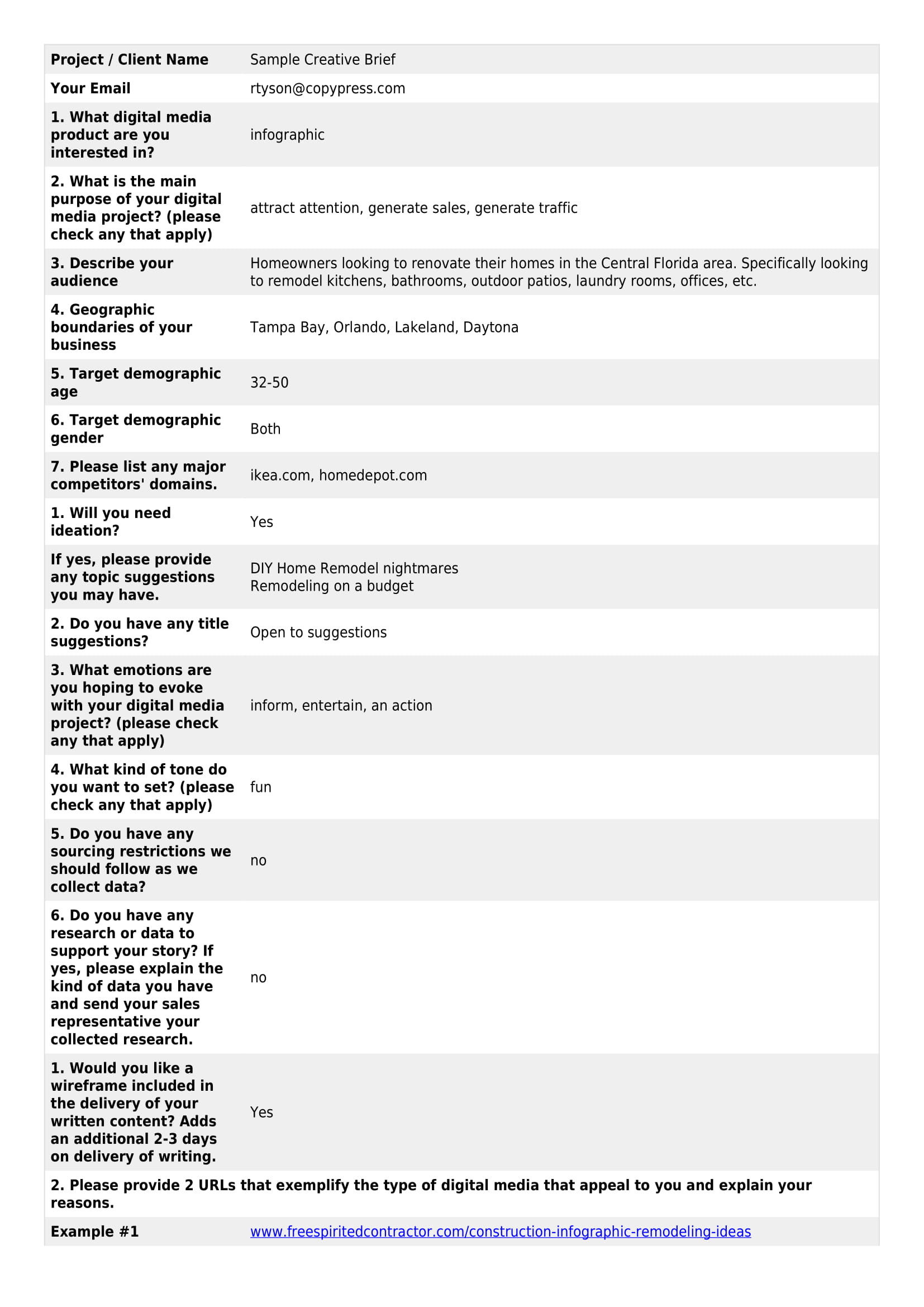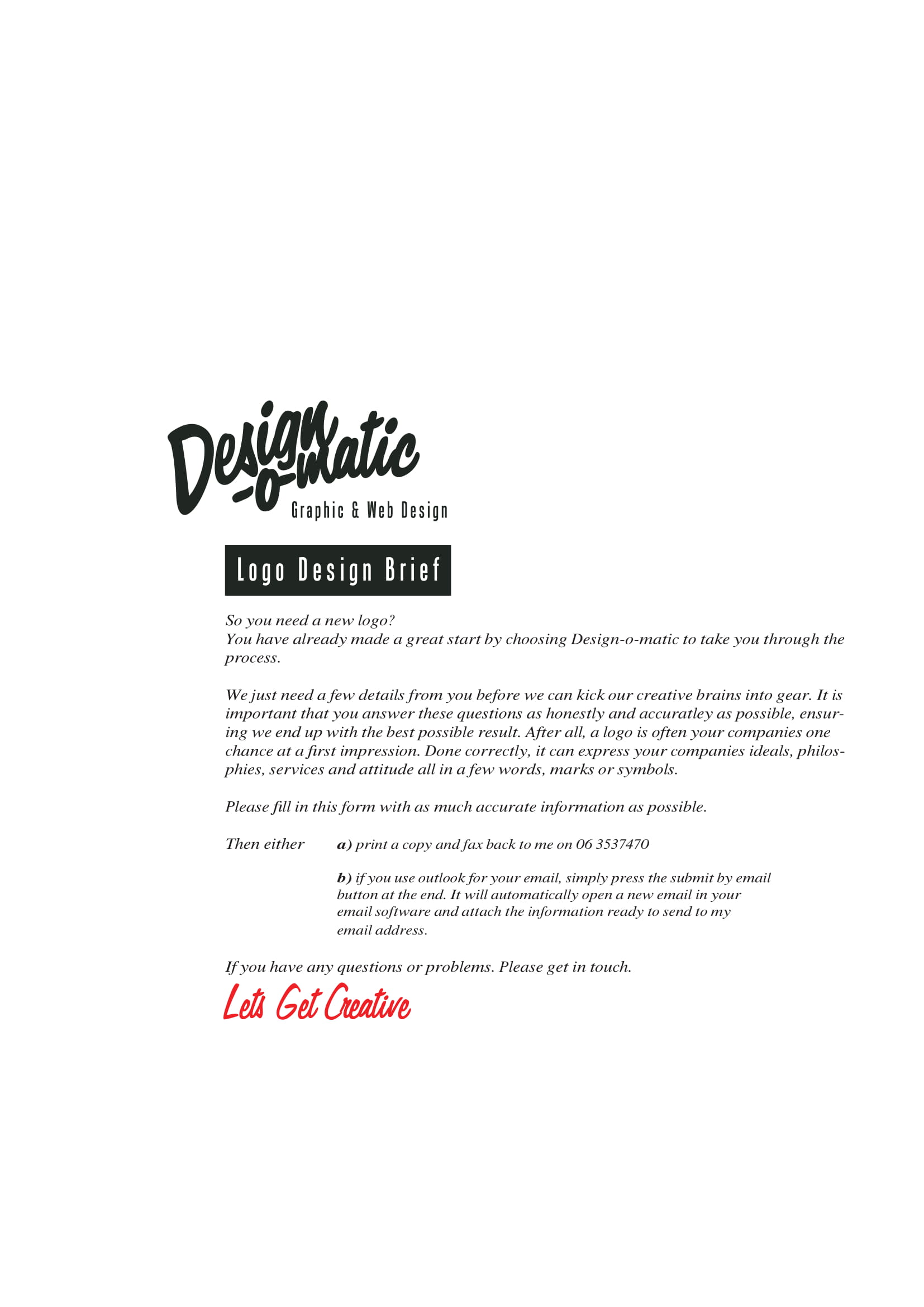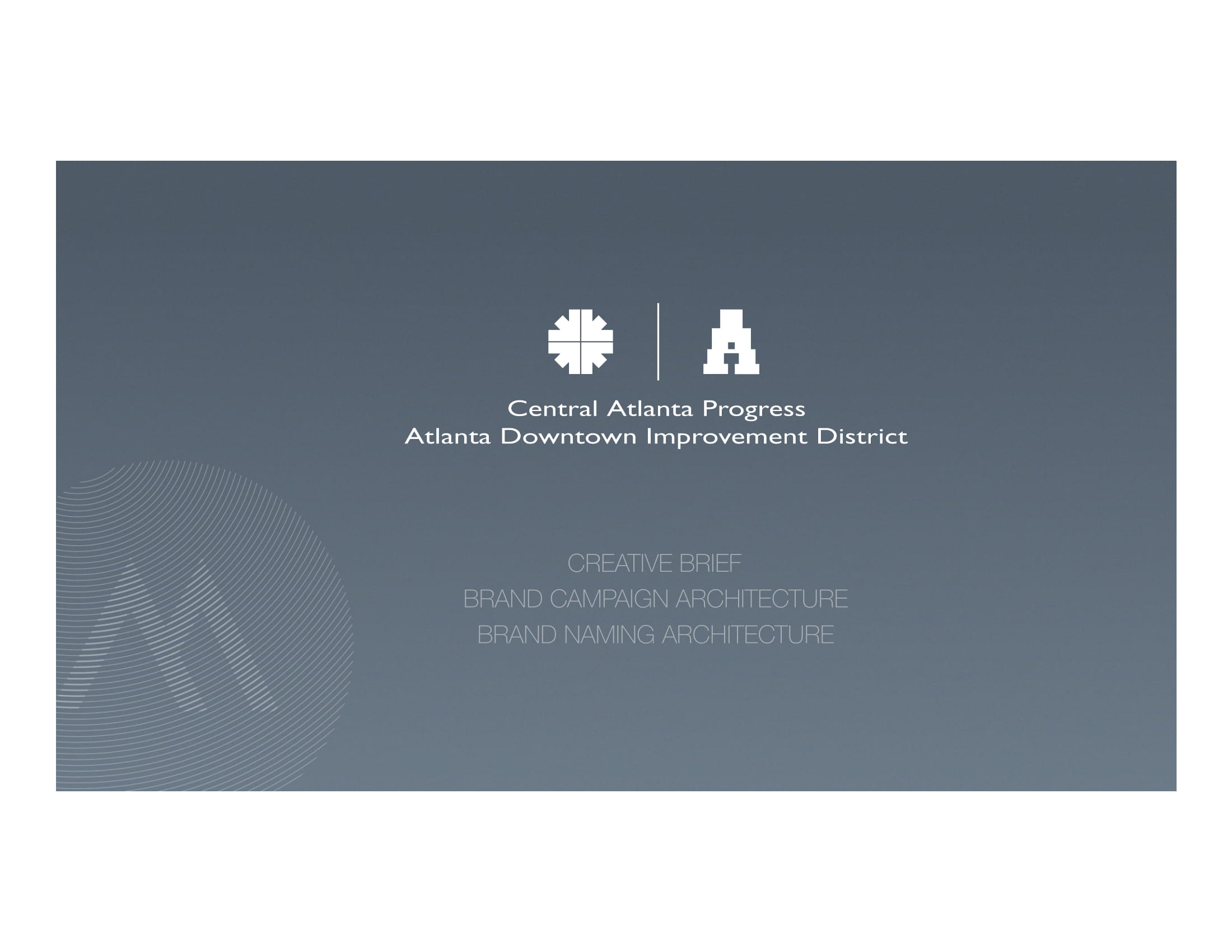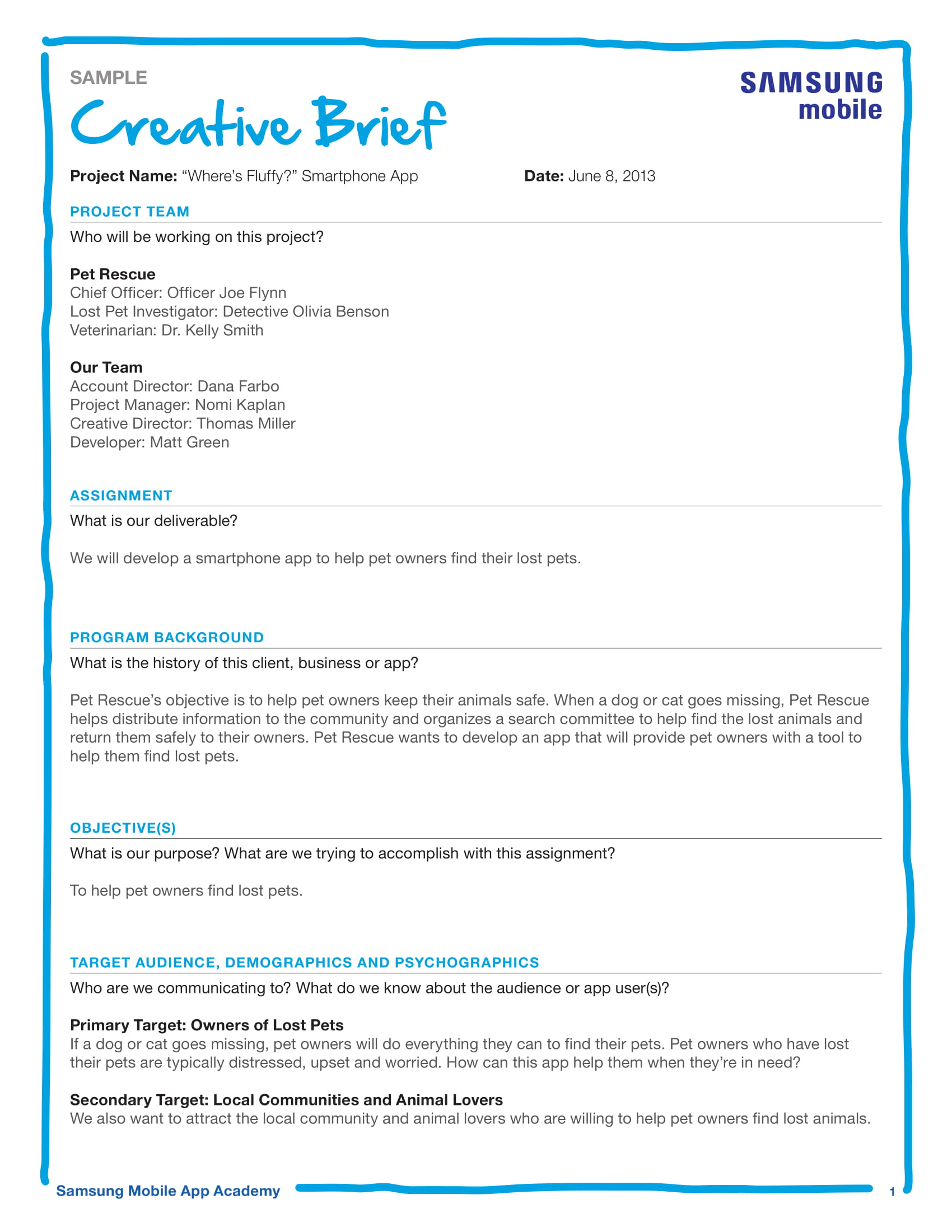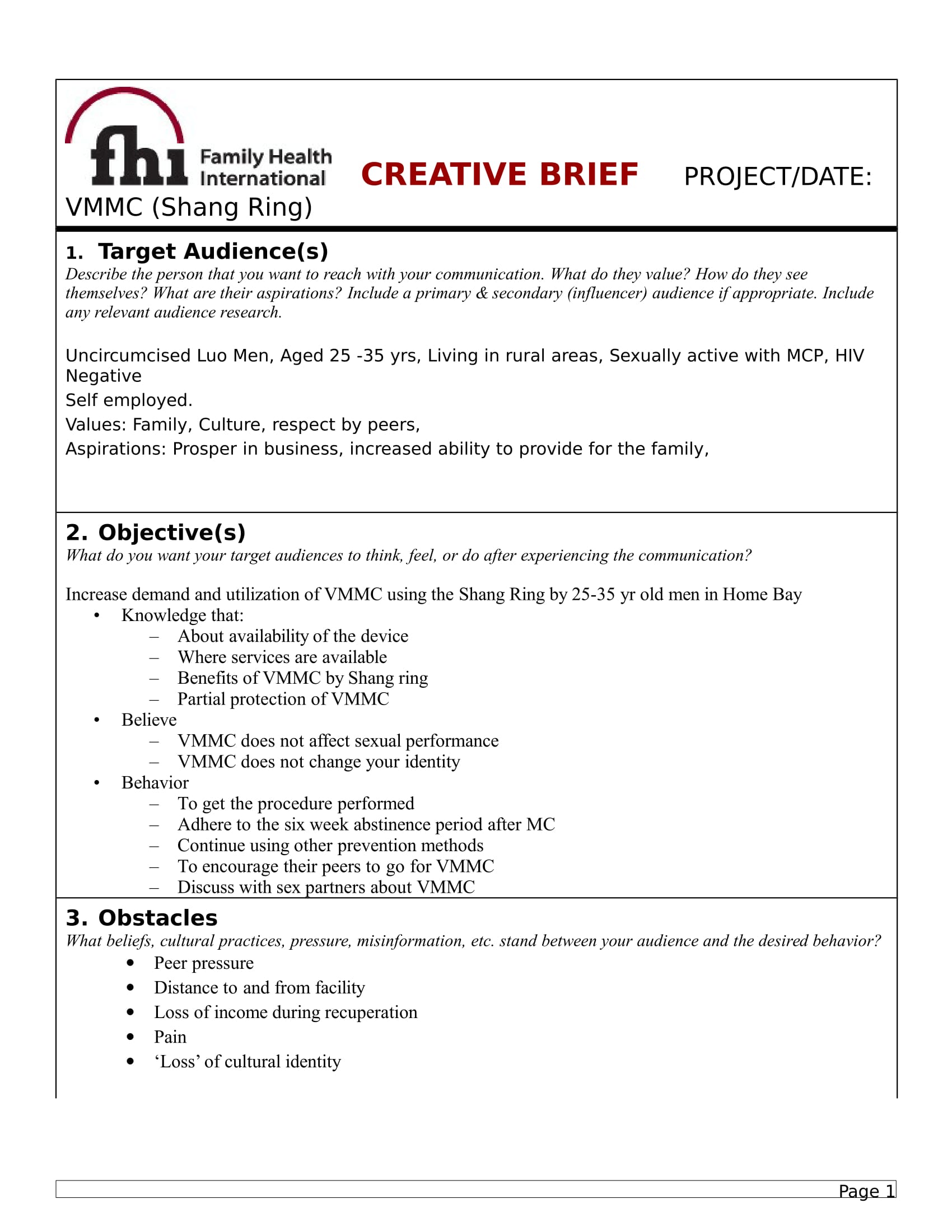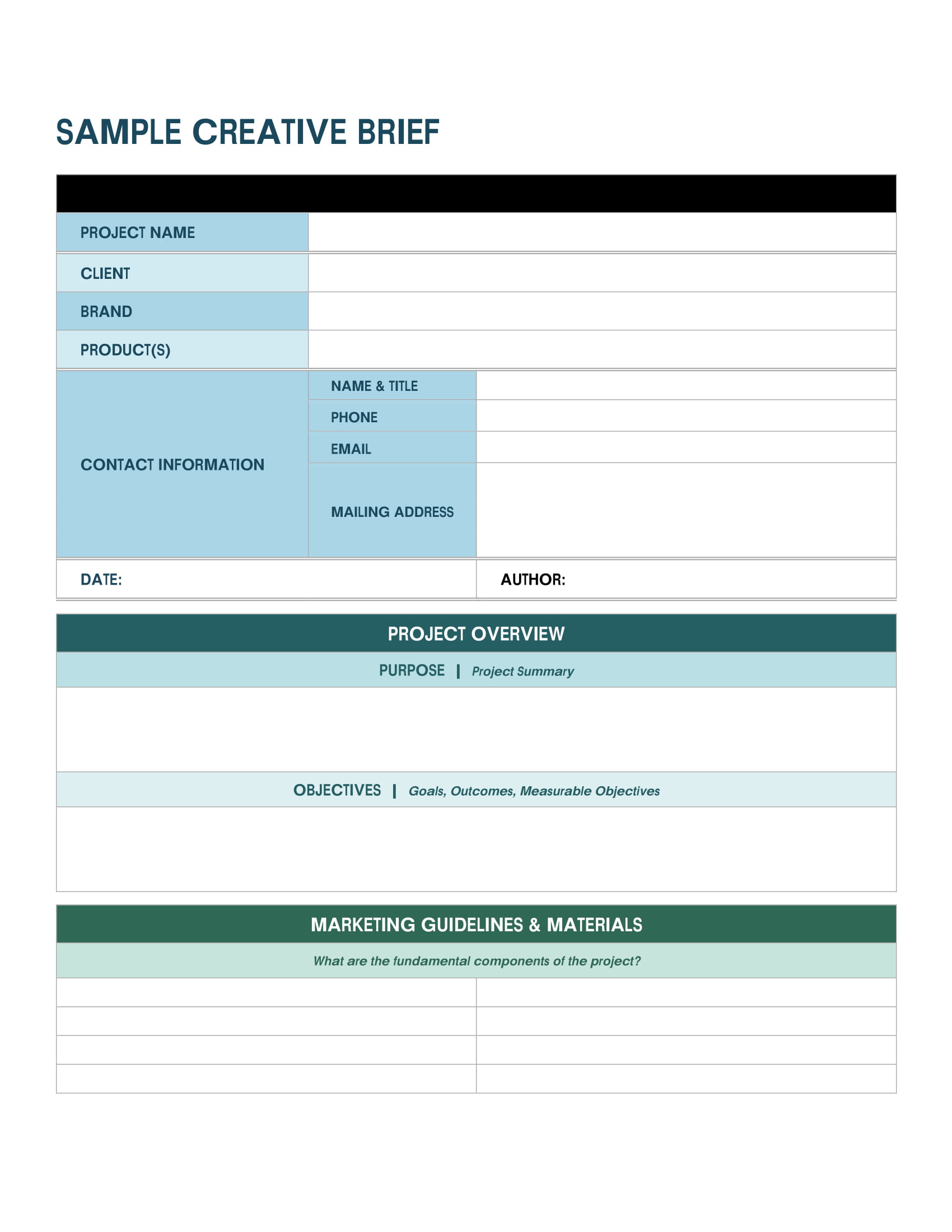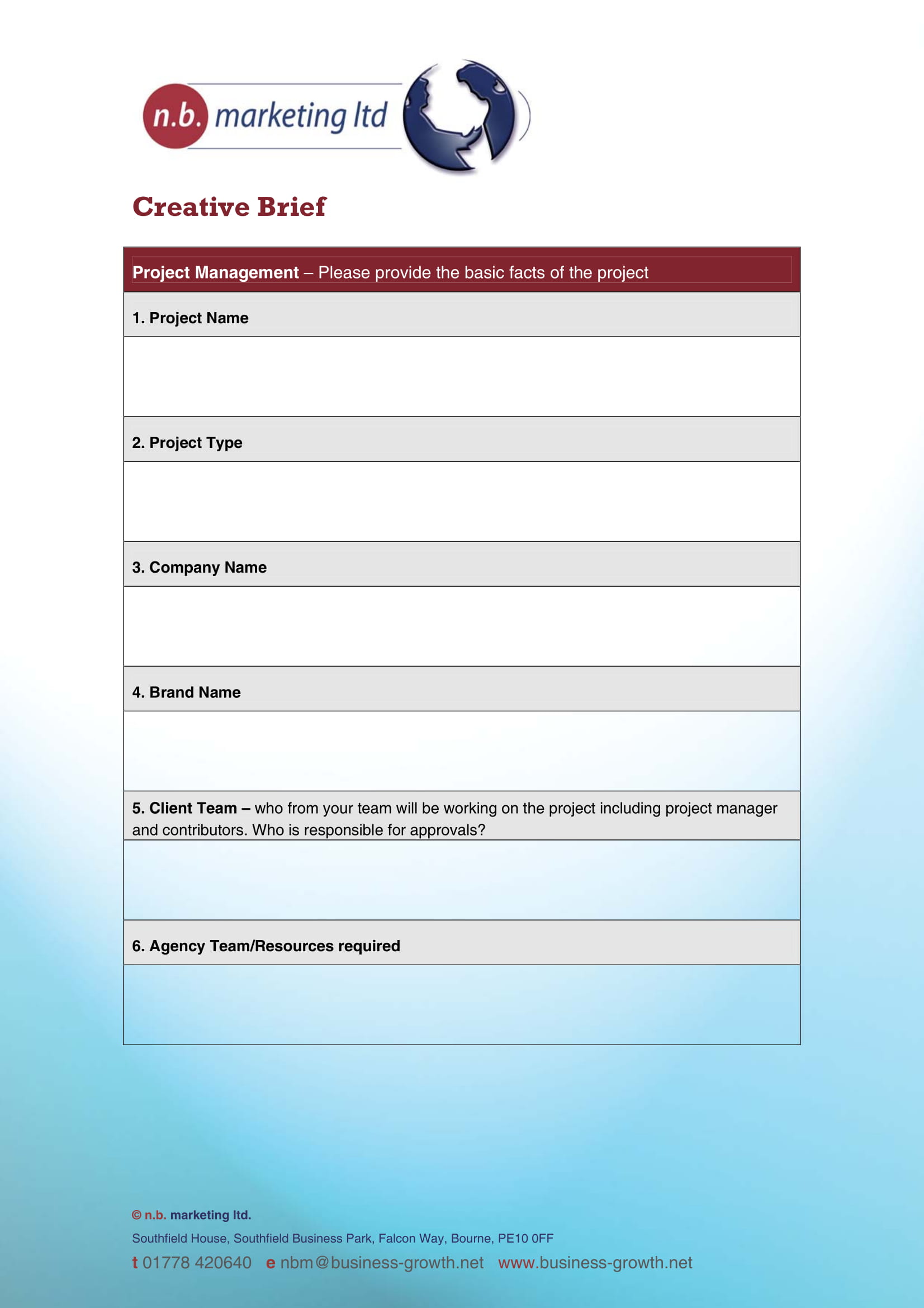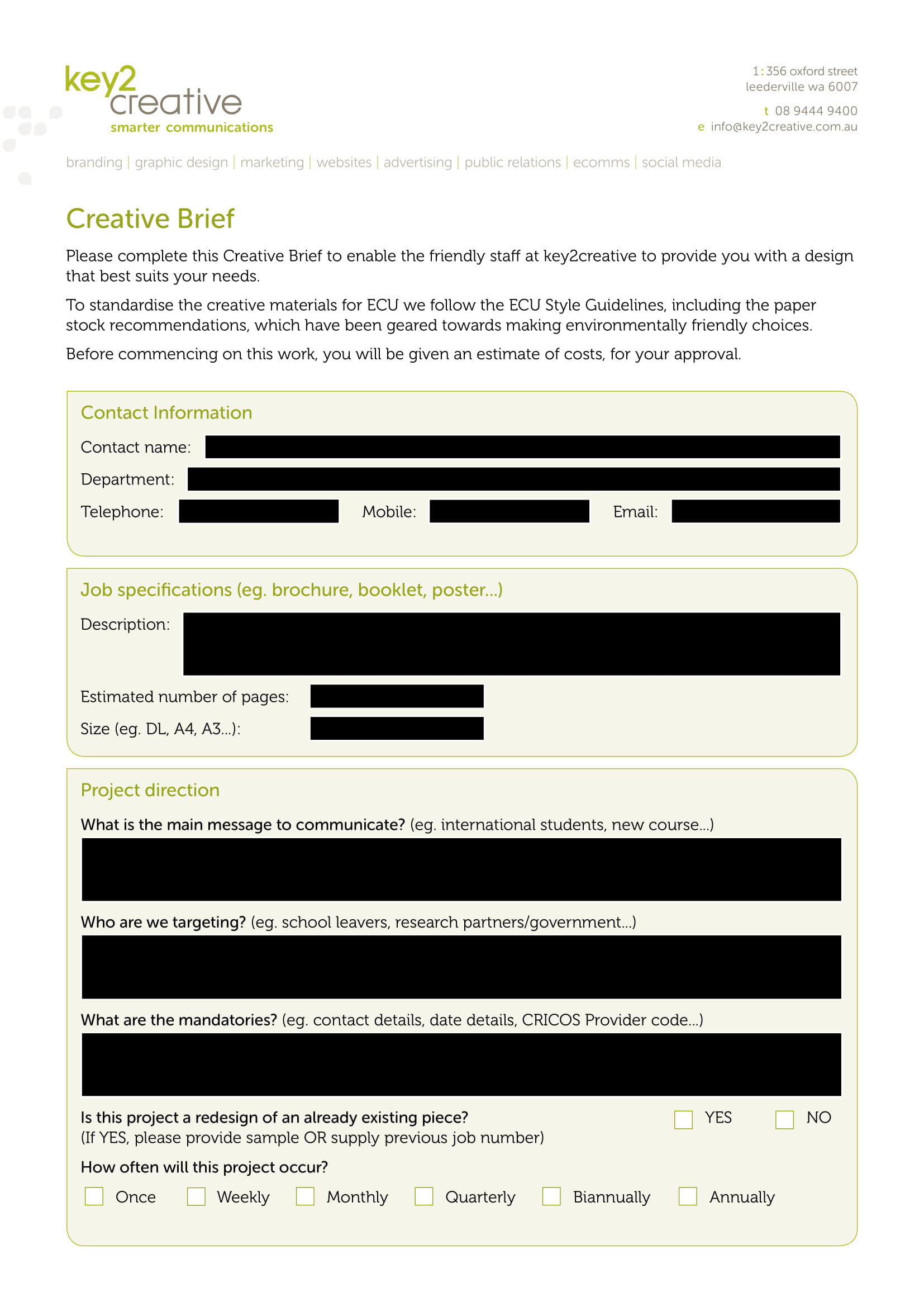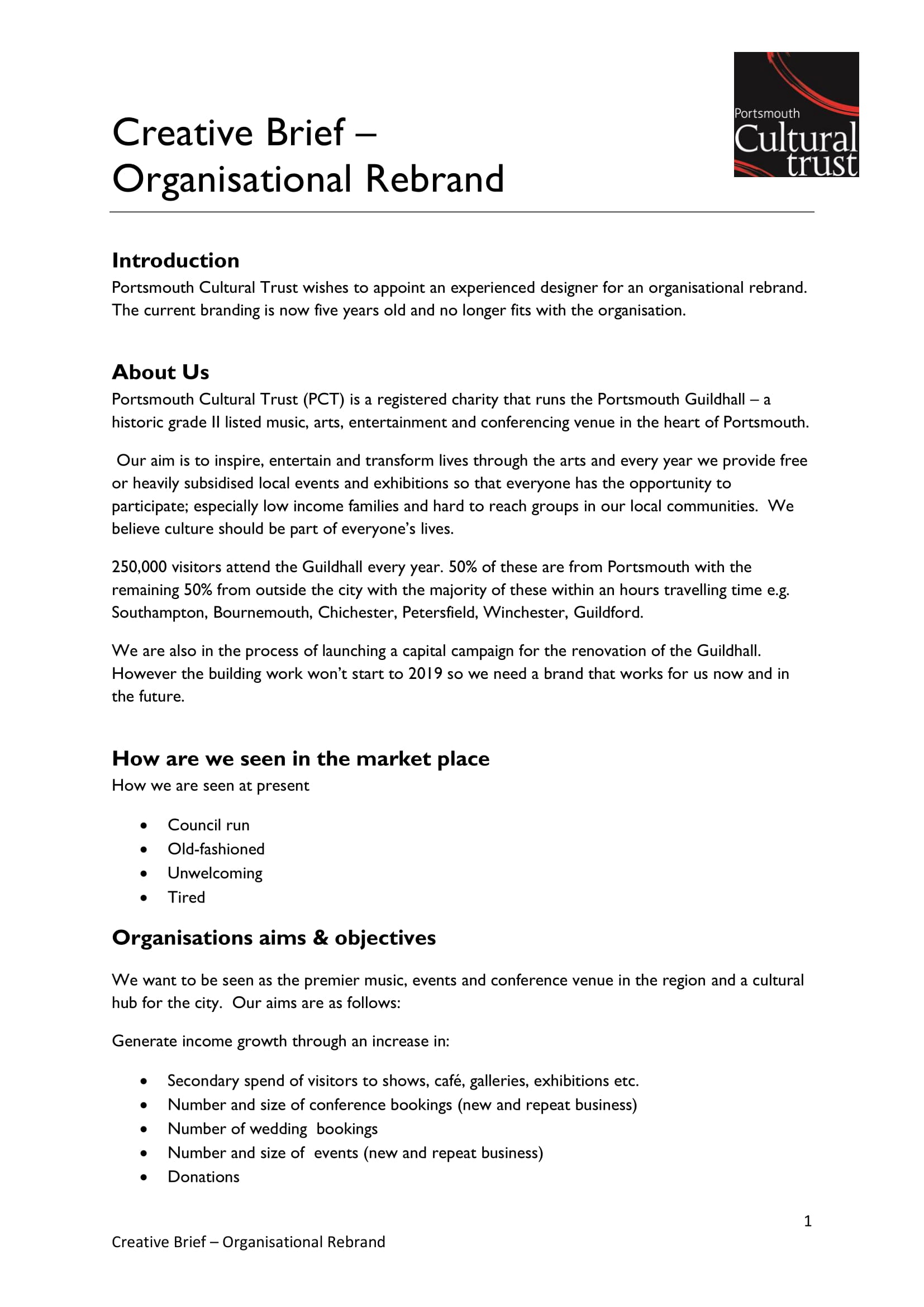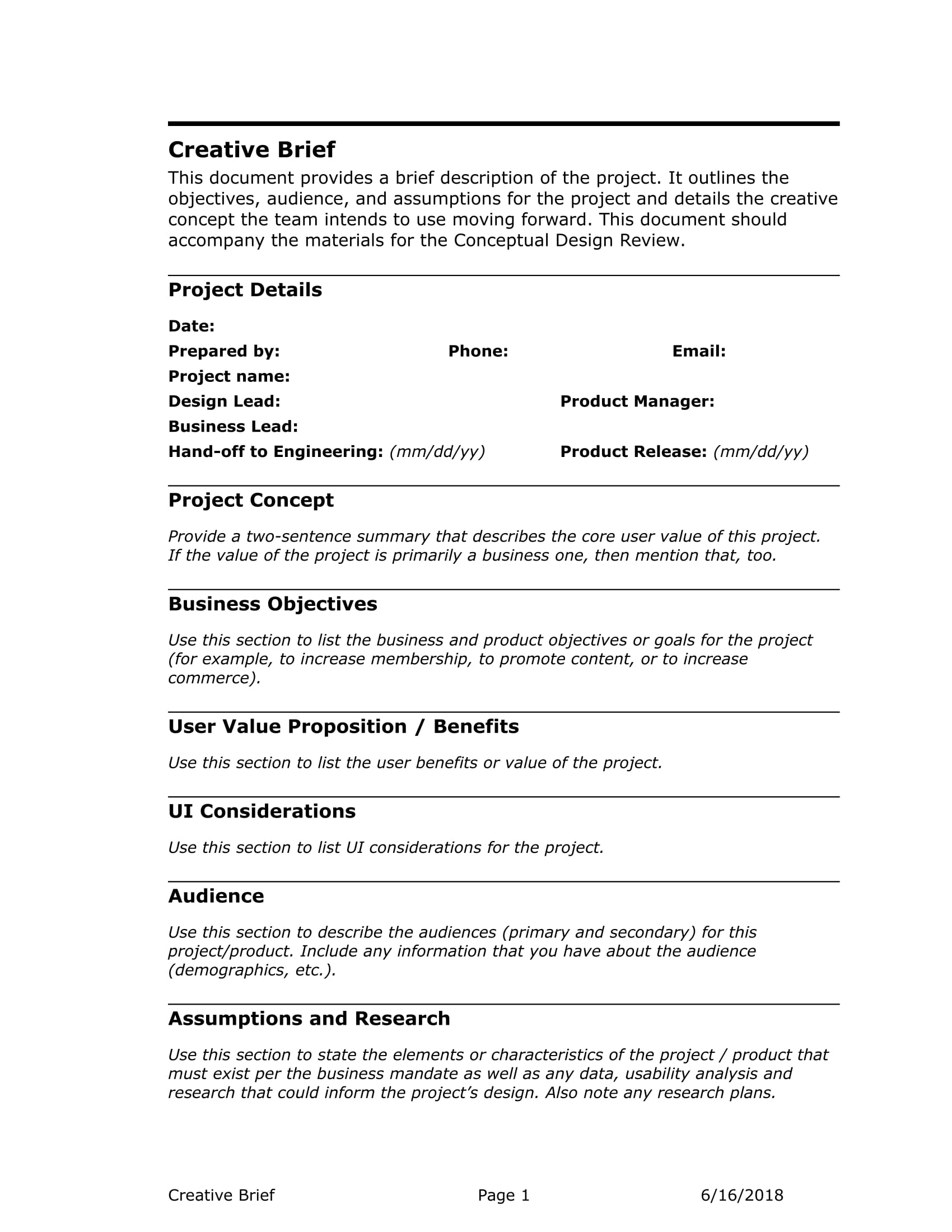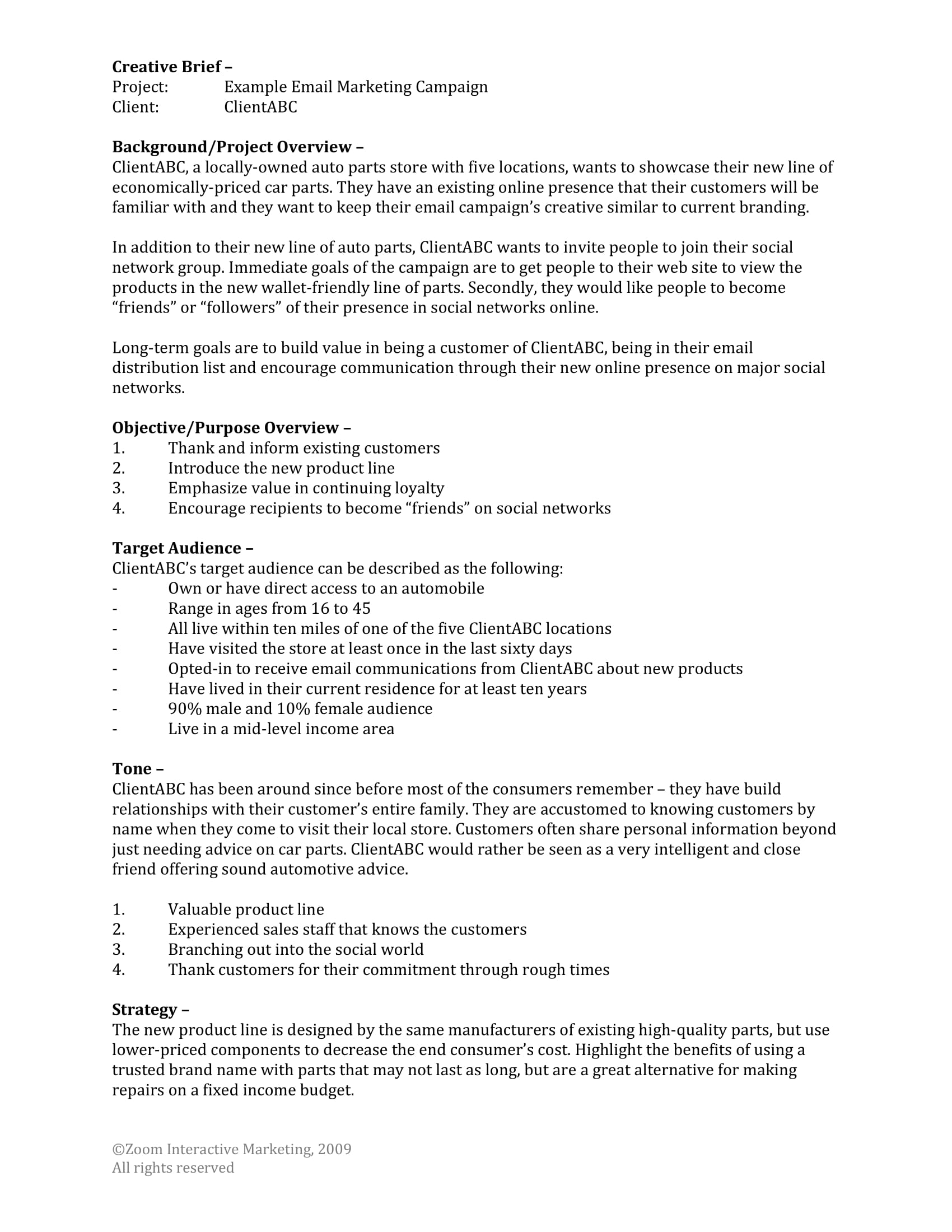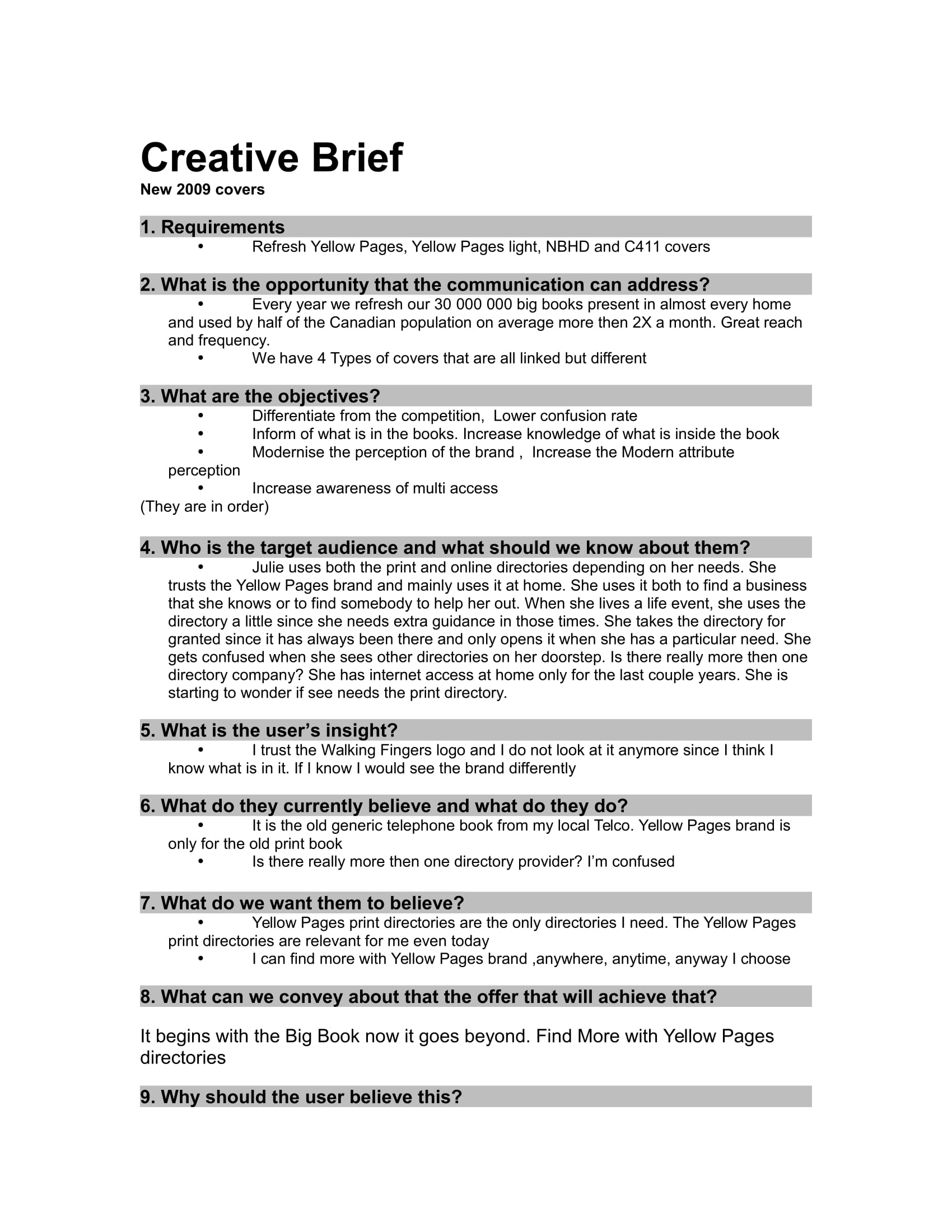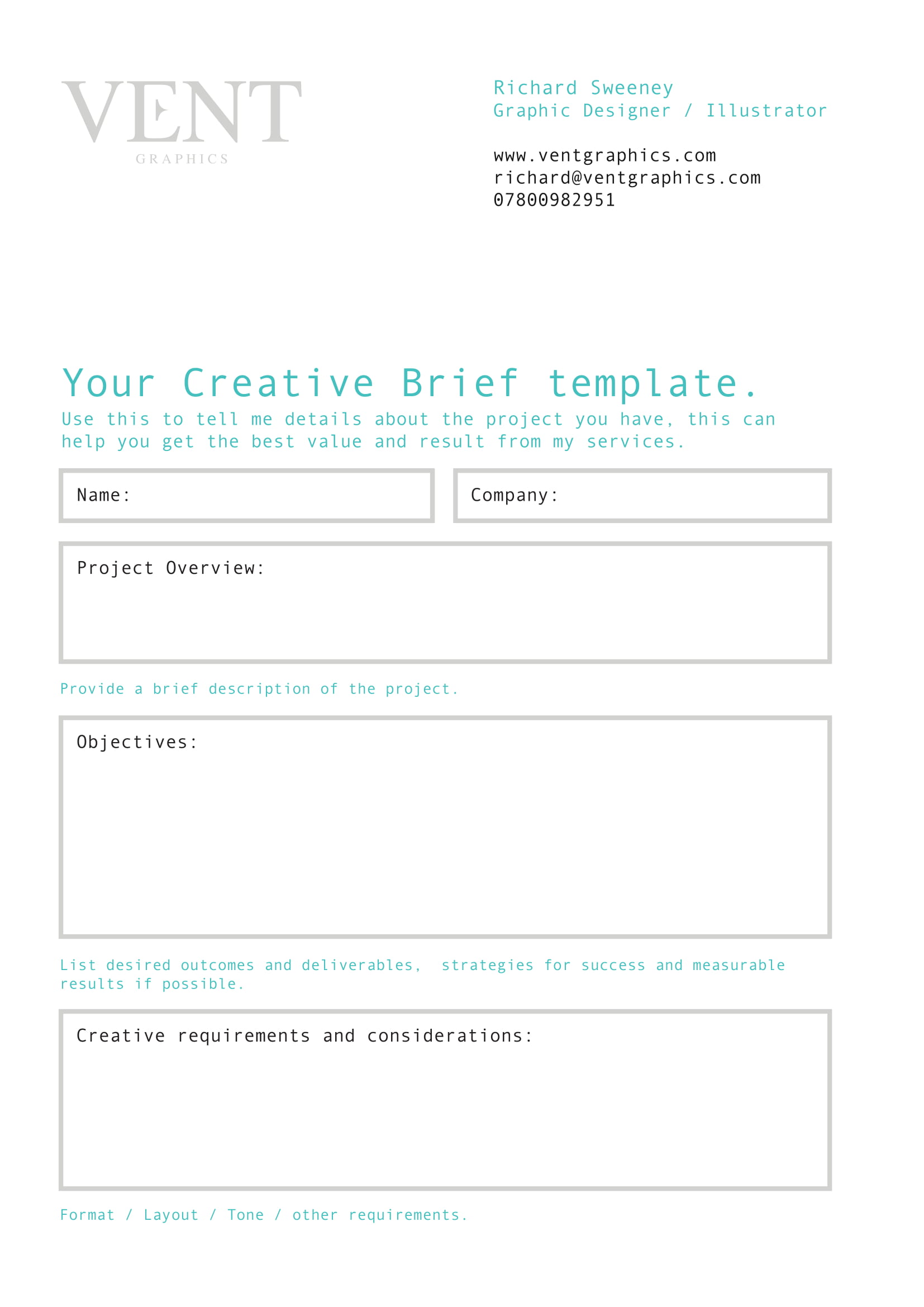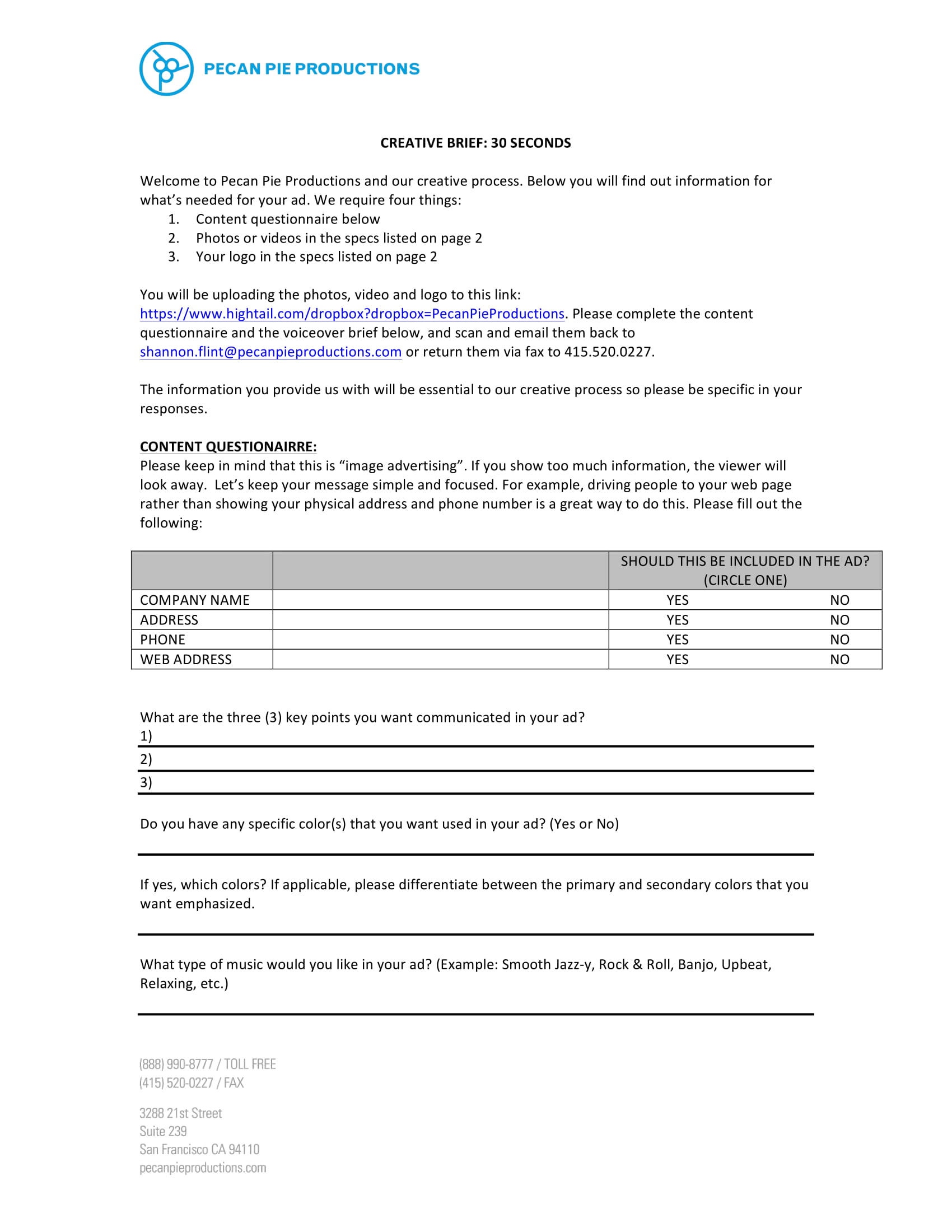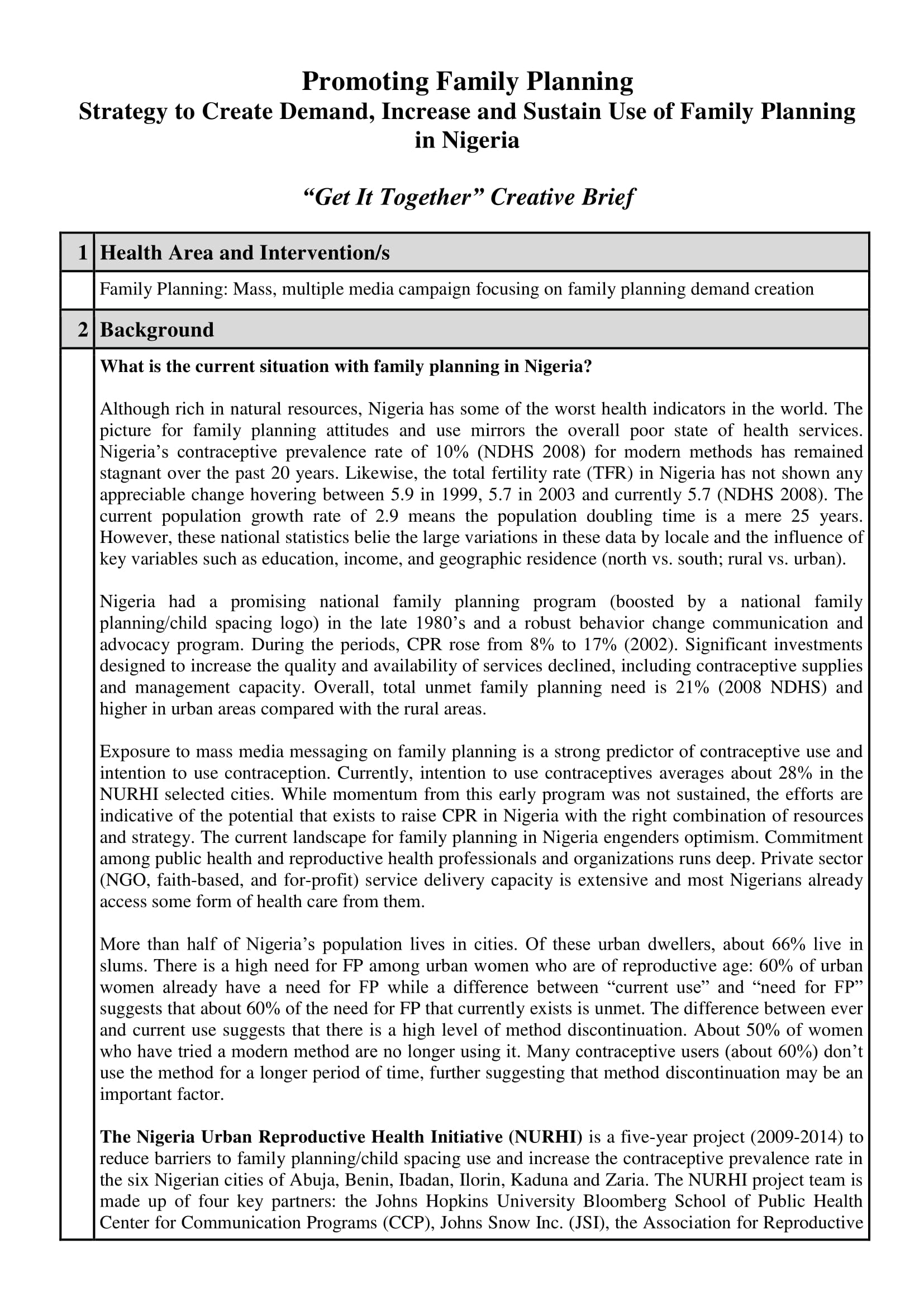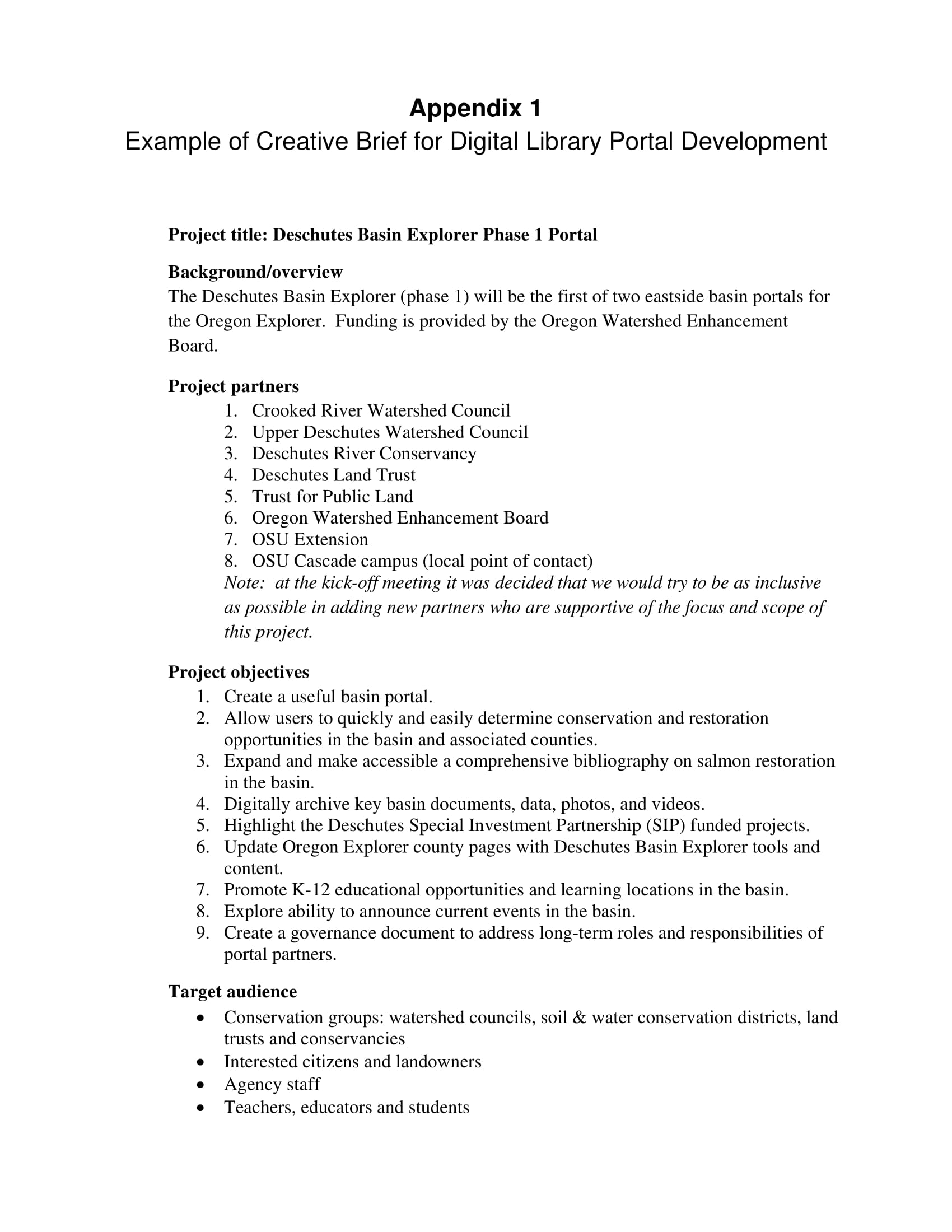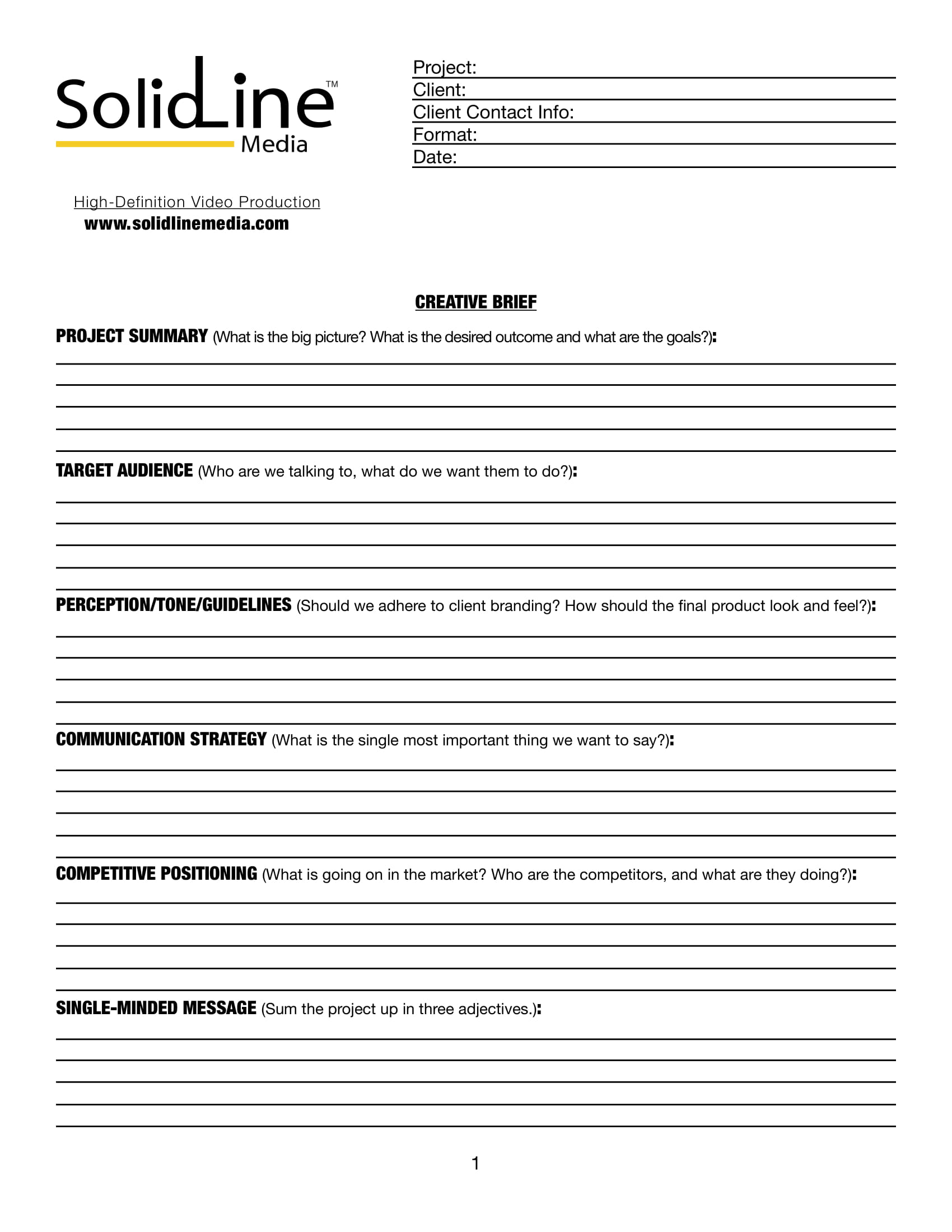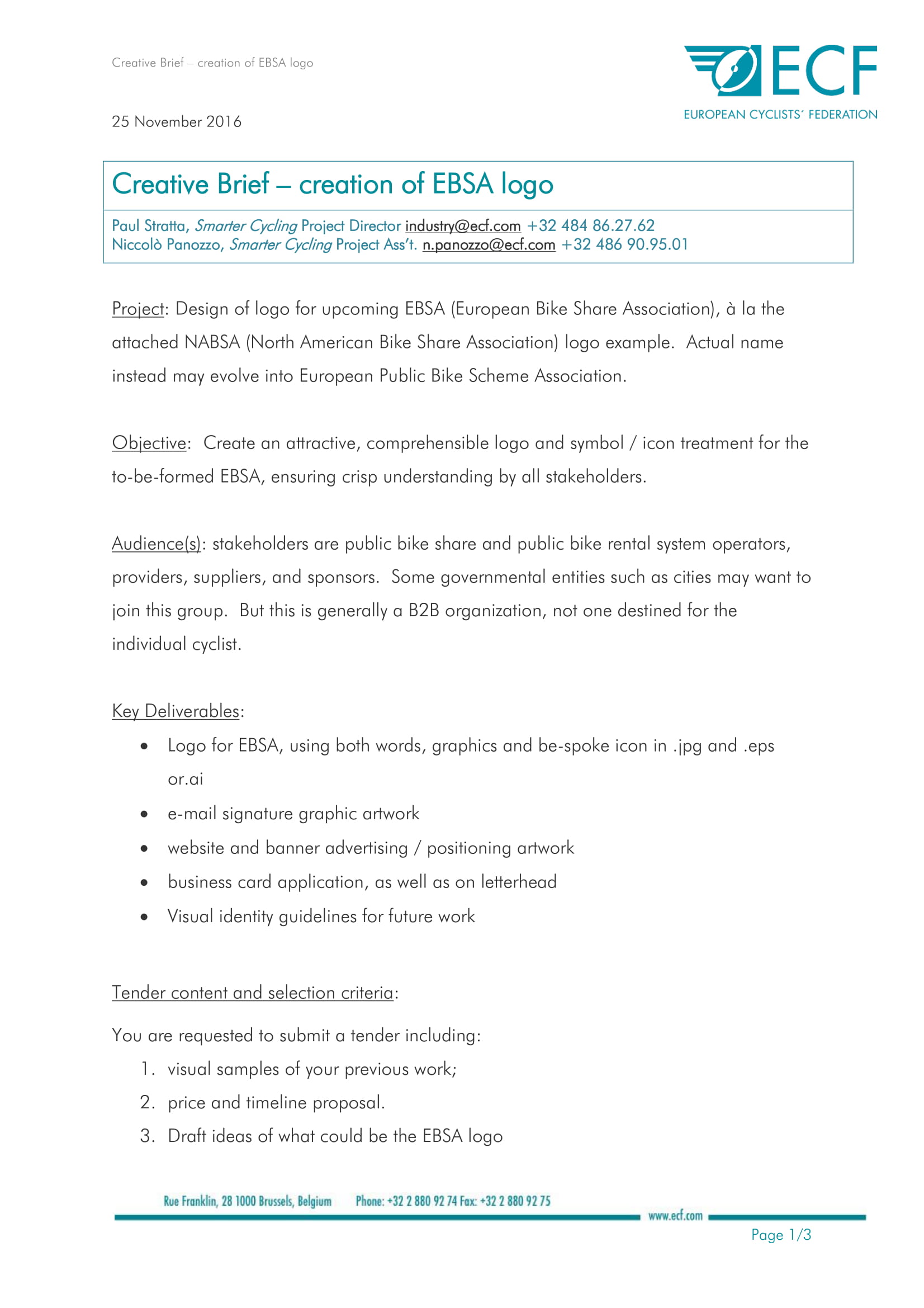32+ Creative Brief Examples to Download
Embarking on a new creative project requires a solid foundation, and that’s where a well-crafted creative brief comes into play. Serving as the cornerstone for all creative work, a comprehensive brief aligns your team’s vision, ensuring every piece of content, from compelling advertising campaigns to engaging social media posts—resonates with your target audience. By utilizing brief templates, you can streamline your planning process and maintain consistency in every creative endeavor. Dive into our detailed guide to master the art of creating effective briefs that elevate your content marketing strategy.
Speaking of which, everything that needs long-term execution and involves boat loads of cash needs thorough and careful planning. It is extremely wasteful of time, effort, money, and other resources to come up with ideas that have no consideration for the future; for example, your team has an idea on how to market or advertise your company but you have no plans on how to finish the project, what steps are necessary to take, what to do for its full implementation, and so on. This can only cause you and your team extreme stress and leaves a lot of room for mistakes that you cannot afford to do.
Therefore, you need to be able to devise a concrete, complete, and comprehensive plan on what to do for your marketing and advertising campaigns. You have to establish a clear direction and a strong sense of purpose on what you want to achieve with the project. This will then help you efficiently and effectively implement the ideas and concepts that you have agreed upon. But what do you use to achieve this? How do you come up with the right solution to such a problem? The answer to your questions is a creative brief.

What Is a Creative Brief?
Before you go on and make a creative brief for your marketing and/or advertising campaigns, you need to be able to understand the basic concept behind a creative brief. A creative brief is basically the equivalent of a blueprint for marketers, project managers, etc. It is the outline of the creative project you are about to implement to help market your company and the products and/or services you offer to the general public, but more so to your target demographic. Simply put, it is the foundation for any advertising or marketing campaign.
By definition, a creative brief is a “marketing a document that gives details of what should be considered when something is being designed or advertised: In any marketing campaign, a good creative brief will focus your efforts and sharpen your message.” It is a framework designed by the requesting party (the customer) to be followed by an advertising company in promoting the company and its products and/or services. It serves as a guide and even as a source of inspiration in order to produce quality promotional outputs.
It contains a summary of the key factors needed for your final output. It dwells on the big picture down to the most specific details necessary to complete and effectively implement the plan. It contains a concise summary of the background, the target audience, information regarding the company or brand competitors, the client’s short- and long-term goals and other project specifics. These information will be used as the basis when your team generates ideas and concepts and basically a guide on how to fulfill such requirements.
A creative brief should answer some of these questions: What is this project? What’s the task at hand? Why is there a need to do it? What is the true problem or opportunity here? Who is it really for and why should they care? Where, when, and how will it be used? How will it be remembered and retold? What needs to be done by whom, and when should it be delivered? The answers to these questions will help you and your whole team form and establish a good quality design brief for your marketing or advertising campaign.
One Page Creative Brief Template
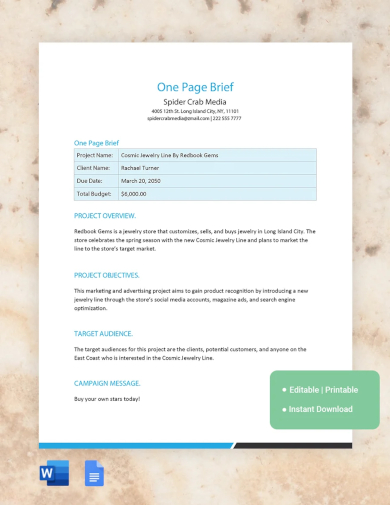
Social Media Influencer Creative Brief
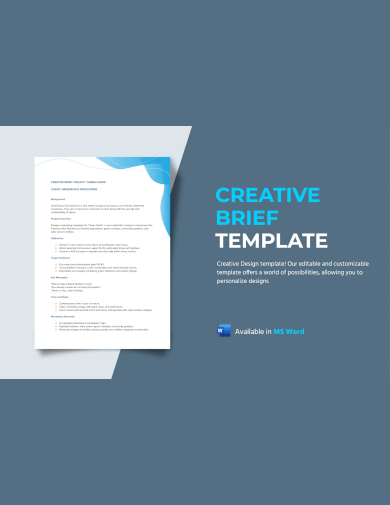
Business Creative Brief Template Example
Creative Brief Template Example
Simple Creative Brief Template Example
What is a Creative Brief used for?
A creative brief is a short document that sums up marketing, advertising, or design project mission, goals, challenges, demographics, messaging, and other key details.
Purpose of a Creative Brief:
A creative brief is used as a foundational tool in the planning and execution of a creative project. It serves several critical functions:
Defining Project Scope:
A creative brief example is used to outline the scope of a creative project. It provides clear guidelines on what needs to be accomplished, helping to prevent scope creep and ensuring that all team members are working towards the same goals.
Aligning Team Efforts:
It serves as a reference point for all parties involved, ensuring that everyone from the creative team to the stakeholders has a unified understanding of the project’s objectives and deliverables.
Guiding Creative Direction:
The brief offers direction to the creative team, detailing the project’s vision, the message that needs to be conveyed, and the tone that should be used, which guides the ideation and production processes.
Informing Decision Making:
Decisions about design elements, messaging, and strategies are informed by the information contained within the creative brief, ensuring that all creative decisions align with the project’s objectives and the brand’s identity.
Streamlining Communication:
By having a documented policy brief, communication is streamlined between the team and stakeholders. It acts as a tool to facilitate discussions, feedback, and revisions throughout the creative process.
Measuring Success:
A creative brief outlines the criteria for success, providing benchmarks against which the project’s effectiveness can be measured. It helps in evaluating whether the final output meets the project’s initial goals and objectives.
In essence, a creative brief is a foundational document that ensures clarity, efficiency, and alignment across all stages of the creative process.
Basic Creative Brief Format Example
Agency Campaign Creative Brief Example
Importance of a Creative Brief
For starters, you want and should use a creative plan in order to avoid an unorganized marketing or advertising campaign. The creative brief will help you achieve what you want to achieve minus the frustration, sloppiness, unimaginative work, an angry team, wasted time, and wasted money. Aside from that, here are a couple of reasons why it is important to use a creative brief:
1. Get everyone on the same boat:
A creative brief is an efficient tool to use in order to get all project participants on board on the same boat. Regardless of your position, a creative brief will help you get everyone prepare and think of the same thing at the same time. This is very useful since not all team members will have the opportunity to attend every client meeting, the creative brief will keep everyone updated on the changes made during such meetings. The creative brief will be like the baton in your relay race where relevant information are handed on the next contributor after a certain portion is done. It will help everyone know the status of the campaign in order to keep the focus of the people involved on their specific tasks.
2. Helps identify what you don’t know:
The main purpose why you make a creative brief is to arrange and organize all the necessary and relevant information you need for a marketing or advertising campaign in one document. An additional advantage to using a creative brief is that it gives you the chance to know and realize what you don’t know. Or maybe even realizing where your judgment and understanding can be stronger. With the opportunity of finding out what you don’t know of yet with regard to the project, it can be easily solved and given the right solution. This will also enable you to supplement your creative brief with additional information that will give you a more comprehensive understanding of the objective your client has in mind as well as determine how you can help out with achieving the same objective.
3. More than just a database:
Just because the document compiles all the relevant information about the project, it does not necessarily mean that it is a database of some sort. It is more than just a compilation of useful information, it is also a way to capture the tone the client wants to embody as well as the specific messaging it wants to convey to its prospect customers. It goes the extra mile of just quoting the products and/or services of the client, it also accounts the context and objective that is suitable for the overall goal of the client. Simply put, it should be and it is in fact more than just a collection of facts and other details, it is also a document containing the vision of the project. The vision should describe the wants, needs, and requirements of the client in order to clearly inform the stakeholders from start to finish. You may also see case brief
4. Conducive to effective messaging:
Since you have already established the vision for the creative brief along with the relevant information to pursue the said vision, you now have to proceed to addressing the responsibility of conveying the right message of the campaign. The messaging of your campaign will help you make and achieve the impact you plan to achieve. With the help of the information you have, which will be your starting point and the established end point or your vision, stakeholders can review, gain an insight, and decide on which possible routes to follow to get to the end point. This can be easily determined if there is a strong link between the product, the brand, and the style. These are the three factors that can help shine a light on which path is the best to take in order to get to the desired end point.
5. Inspires and confirms:
While it is what you and your team intend to do and what clients expect from all of you, the energy and passion you can have for a certain campaign can ebb and flow. After all, you are all just humans who get tired from rigorous work and pressure; this is where a creative brief can come in handy and can help get all of you get right back on track. A creative brief, when done well, can be an additional source of inspiration that can help the creative juices flowing.
6. Provides opportunity to be reviewed:
Even after the project is implemented, the creative brief still holds its original value. Although it is not needed just as much as it was during the planning stage of the project, it can still be useful when working on similar projects and/or campaigns, or working with similar clients. It can be easily reviewed in order to remind you and your team of what was right before and to gain an insight on what will be needed to endure a similar success on anew project or campaign.
Asia-Europe Foundation (ASEF) Creative Brief Example
Comprehensive Creative Brief Template Example
Basic Creative Brief Template Example
Nike Creative Project Brief Example
Branding Creative Brief Example
Elements in a Creative Brief:
Here are Basic Elements of Creative Briefs:
Project Overview:
The project overview sets the stage for the brief, providing a snapshot of what the project entails. It includes a concise description of the project brief, its background, and the client’s business. This section establishes the context for the creative work.
Objectives and Goals:
Here, the specific objectives and goals of the project are outlined. This could include what the project aims to achieve, such as increasing brand awareness, driving sales, or launching a new product. The goals should be clear, measurable, and achievable.
Target Audience:
Understanding the target audience is crucial. This section delves into who the project is intended for, including demographic information like age, gender, and location, as well as psychographic details such as interests, lifestyle, and behavior patterns.
Key Message:
The key message is the core idea that needs to be communicated through the creative project. It’s the main takeaway for the target audience, and it should be compelling and memorable.
Tone and Style:
The tone and style dictate how the message will be delivered. It should reflect the brand’s personality and resonate with the target audience. The tone could range from professional and authoritative to casual and friendly, depending on the brand and project.
Media and Channels:
This element specifies where the creative work will be seen or heard. It includes the types of media to be used, such as print, digital, social media, or broadcast, and may also outline the rationale for selecting these channels.
Deliverables:
The deliverables section lists the specific outputs required. This could include a variety of formats such as logos, advertisements, web pages, or video content. Details on the size, format, and any technical specifications should be included.
Budget and Resources:
A clear budget helps to define the scope of the project. This section outlines the financial constraints and resources available, which may include monetary limits, personnel, existing assets, or technology.
Timeline:
A timeline with milestones and deadlines is essential for keeping the project on track. This includes dates for briefings, concept presentations, revisions, approvals, and final delivery.
Approval Process:
The approval process outlines who will review and approve the work at each stage. It helps to manage expectations and streamline the feedback loop.
Creative Considerations:
Any additional creative guidelines or constraints, such as brand guidelines, legal requirements, or cultural sensitivities, are noted here to guide the creative development.
A comprehensive creative brief ensures that all team members have a clear understanding of the project’s requirements, helping to steer the creative process towards a successful outcome.
Direct Mail Project Creative Brief Example
Atlantic Avenue Creative Brief Example
Creative Brief Template Example
Types of Creative Briefs:
Here are Types of Creative Briefs:
Advertising Creative Brief:
An advertising creative brief is focused on campaigns that aim to promote products or services. It details the campaign’s target audience, the key message, the call to action, and the media channels through which the advertisement will be delivered. It’s essential for aligning the campaign with the brand’s marketing objectives.
Branding Creative Brief:
This type of brief is used when creating a new brand identity or rebranding an existing one. It includes the brand’s vision, mission, values, personality, and the emotional response the brand intends to evoke. It guides the development of brand elements like logos, typography, and color schemes.
Website Design Brief:
A website design brief outlines the objectives for a new or redesigned website. It covers the target users, desired functionality, content structure, and aesthetic preferences. This brief is crucial for web designers and developers to create a site that meets both user needs and business goals.
Video Production Brief:
For projects involving video production, this brief details the concept, script, storyboard, intended audience, and distribution plan. It’s used to guide the production of commercials, corporate videos, or social media content, ensuring that the final product tells a compelling story that resonates with viewers.
Social Media Creative Brief:
This brief is tailored for social media campaigns. It specifies the campaign goals, target demographics on each platform, content themes, posting frequency, and engagement strategies. It’s vital for creating content that is shareable and tailored to the nuances of each social media channel.
Event Creative Brief:
Used for planning events, this brief outlines the event’s purpose, theme, target audience, venue, and the overall experience the organizers want to create. It ensures that all event materials and activities align with the event brief strategic goals.
Packaging Design Brief:
In packaging design, the brief includes information about the product, the brand, the target market, and the packaging requirements. It guides the design process to ensure that the packaging is not only functional but also communicates the brand effectively on the shelf.
Each type of creative brief serves as a strategic roadmap, ensuring that the creative output aligns with the project’s goals and delivers the intended message to the target audience effectively.
Infographic Creative Brief Example
Logo Design Creative Brief Example
Brand Campaign Creative Brief Example
Smartphone Application Creative Brief Example
Health Related Creative Brief Example
Printable Creative Brief Template Example
What is in a Creative Brief?
A creative brief is a foundational document used to capture the essence of marketing or advertising campaigns, design work, or any creative project. It outlines the strategy, key messages, and logistical details to guide the creative work.
Contents of a Creative Brief:
Here’s what a comprehensive creative brief might include:
Overview of the Project
The creative brief starts with a high-level overview of the project, outlining the basic details such as the project name, client, brand, and a brief description of the project’s goals.
Objectives
This section defines what the project aims to achieve. It includes the communication objectives, what the project should accomplish, and the desired end result or impact.
Target Audience
Here, the brief describes the demographic and psychographic profiles of the consumer or audience the project is intended to reach, including their behaviors, motivations, and pain points.
Message
The key message that needs to be conveyed through the creative work is detailed in this part. It often includes the main idea, the supporting message, and any mandatory information that must be included.
Tone and Brand Voice
This outlines the desired tone and style of the communication. It should align with the brand’s voice and the project’s objectives, whether it’s professional, friendly, authoritative, or whimsical.
Media and Deliverables
A list of the specific deliverables required for the project, such as print ads, social media content, or television commercials. It also details the media channels that will be used to distribute the creative work.
Budget and Resources
This includes the budget for the project and any resources or assets available, such as brand assets, customer insights, or market research data.
Approval Process
The brief should specify who will be involved in the approval process, the stages of review, and how feedback will be collected and implemented.
Creative Considerations
Any additional creative guidelines or constraints, such as brand guidelines, legal requirements, or cultural considerations, are noted here to guide the creative development.
Here are few more useful points:
1. Company background
The company background should briefly state who the company is. It should provide relevant information in order to get to know the company and what it stands for. A mission statement or the values they stand for a best examples on what could be written in the company background. This part explains why they are in business, what problems they are trying to solve for their clients, and so on.
2. Stakeholders or decision makers
This section pertains to the point person/s of the project. The details regarding these people should be provided on this section such as their name and contact information. This will help all the people involved in the project know who to turn to when they have questions, clarifications, and suggestions.
3. Project summary or description
This section should describe what the project is, what it entails, and why it is being done. It should be specified on what you are trying to achieve with this project and how are you going to achieve it. The more detailed this part is, the less you can be surprised on what might happen during the course of the project. However, this should be done briefly but comprehensively since this section is basically just a summary and/or a description of what the project is.
4. Objectives of the project
What is the purpose of the project? You need to be able to identify and determine what you want to achieve with the project in order to have a strong sense of direction. It is also a great time for you to find out if you want to achieve too many things in one project that will cause the project to be ineffective. This section should be narrowed down to the most specific goals and objective you want to achieve.
5. Target audience
It should be clearly identified on the creative brief who the target audience or demographic of your project is. This is an important section on your brief since this will be the basis for your design and strategy. You have to make sure that the design and strategy of your project will appeal to your target audience.
6. Outline of deliverable
You have to determine what to deliver to your clients or what form will the campaign take. Will it be a one-page brochure or a batch of 10 banner ads or a logo for print, just for the Web or for both?
7. Competition
You may want to provide background information regarding your competitors and any trades in the market that may impact your business. You have to provide an overview of your similarities and differences you share with your competitors. Details regarding your competitors will help you generate ideas that can make your business stand out from your competitors.
8. Tone, message, and style
If you have already slowly established a name for your band in the market, the style and tone you choose for your brief should be consistent with the brand and it should also fit well together with what the project is trying to achieve and what actions you want your customers to take. You have to include your creative strategic plan positioning and address the key messages to help inform the messaging and ensure that it aligns with your objectives.
9. Project timeline
During the initial meetings with the designer, you have to make sure you discuss about the project timeline and agree on it. If you have already agreed on it, you have to include it in the creative brief. This will provide a clear deadline on the project so you can make sure everything is done according to what have been planned and scheduled.
10. Overall budget for the project
You have to include the budget that has been set for the project in the brief and discuss it with the designer. If the designs and plans that the designer has for the project exceeds the budget, it is best to have another discussion in order to establish a more realistic set of expectations, deliverable, and project costs before getting started.
Fillable Creative Brief Form Example
General Creative Brief Template Example
How to Make a Creative Brief?
- Starting your Creative Brief Outline: Start your creative brief outline by giving a description of your project and deliverables. The description should briefly include what the project entails and what is its purpose, and the deliverables should be specific.
- Writing your Overview: The overview should include relevant information that your team will need to craft the creative elements of your campaign. You can also add information regarding who is responsible for the final sign-off.
- Establish your objectives: You have to clearly define the goals that you all need to accomplish. This will help you and your team work for the same goal and end result.
- Determine your target audience: In order to determine you audience, you and your team should be able to address what problems you need to solve. Finding out who your audience is will be vital in providing direction on how to format and design the campaign.
- Define the message: You need to be able to clearly define the message you want to spread. The brief should be able to answer these three following questions: What problem does the product solve? What’s the angle for this campaign? Which words will help us get that message across?
- Provide design direction: The design for your campaign should be clearly stated in your brief so that your designers have a clear picture on what it will look like when its finished. Your copywriters should also understand the design-side of your campaign so that they can provide direction for the designers as well.
- Define project tone: Your tone should be consistent throughout the entire brief since it expresses your actual message.
- Conduct competitive analysis: Make a list of your competitors and look into if they are doing anything closely similar to the campaign your team is creating. If they are, look for what’s resonating with their audience. You then have to find out how you can be different from them through your creative efforts.
- Outline creative and technical requirements: You have to list out all the image requirements, copy requirements, and technical requirements that your team needs before you can send in your brief to the advertising agency.
- Create a project timeline: Your team needs to know how quickly they need to create and proof their parts of the campaign. You also need to provide initial due dates that includes what part of the campaign is due and when the specific date is.
- Finalize total costs and budget: You should include your budget and the estimated cost of the services your team is providing in your creative brief.
Usable Creative Brief Example
Organizational Rebranding Creative Brief Example
Creative Brief Format Example
How to write a Creative Brief?
Creative briefs are pretty standard documents within just about every marketing, advertising, or design team. For smaller projects that live in-house (like designs, templates, marketing assets, etc.) the brief is owned by the team who will be executing on the information in the brief. This is usually the creative team, but this team can fall within the brand department or even live within marketing.
Understand the Client’s Vision:
Begin by discussing with the client to understand their vision, goals, and expectations for the project. Gather as much information as possible about what they want to achieve.
Define the Objective:
Clearly articulate the primary goal of the creative project. What does the client want to accomplish? This could be increasing brand awareness, launching a new product, or driving sales.
Identify the Target Audience:
Determine who the project is intended to reach. Consider demographics, psychographics, and behavioral traits. Understanding the audience is crucial for creating relevant and engaging content.
Craft the Message:
Decide on the core message that needs to be communicated. This message should resonate with the target audience and support the project’s objectives.
Establish the Tone and Brand Voice:
The tone should align with the brand’s personality and the project’s goals. Whether it’s serious, playful, professional, or casual, the tone will guide the creative team in their approach.
Specify Media and Deliverables:
List the types of media to be used for the campaign and the specific deliverables required. This could range from digital assets to print materials.
Set the Budget:
Outline the budget for the project. Knowing financial constraints helps the creative team work within set parameters and manage resources effectively.
Create a Timeline:
Develop a timeline with milestones and deadlines. A clear schedule keeps the project on track and ensures timely delivery.
Outline the Approval Process:
Define who will approve the creative work and the process for revisions and final sign-off. This helps avoid bottlenecks and ensures smooth progression.
Include Creative Considerations:
Note any additional creative guidelines, legal brief requirements, or brand elements that need to be included or considered in the creative process.
Review and Refine:
Go over the brief with the client and the creative team, refining any details to ensure clarity and alignment with the project’s goals.
A creative brief is a foundational document that guides the creative process and ensures that the team’s efforts align with the client’s objectives and expectations.
Email Marketing Campaign Creative Brief Example
Creative Brief Example
Creative Brief Template Example
Best Creative Brief Examples:
Here are some of the best creative brief examples:
Marketing Creative Briefs:
Marketing creative briefs are essential for launching campaigns. They encompass broad business goals and strategies, often including revenue targets and budgets. A simple marketing creative brief example would outline the campaign’s objectives, target audience, key messages, and desired outcomes, ensuring all team members are aligned with the campaign’s direction.
Product Design Creative Briefs:
These briefs are pivotal for introducing new products or features. They detail the product’s features, benefits, and the consumer advantages, often including product documentation and descriptions. A product design creative brief example would highlight the product’s unique selling points and how it stands out in the market.
Advertising Agency Creative Briefs:
Used frequently by advertising agencies, these briefs are succinct and incorporate the client’s brand and project specifics. They may also include budget considerations to guide tactical decisions. An advertising agency creative brief example would provide a clear outline of the project’s scope, objectives, and the creative direction to ensure the client’s vision is accurately executed.
Creative Request Template:
A dynamic version of the traditional creative brief, the creative request template, like the one used in Asana, guides the project through each stage, specifying tasks and deliverables. It’s adaptable to various project types and offers multiple views for progress tracking against the creative brief.
Creative Brief Presentation:
Ideal for substantial projects, this template includes comprehensive information ranging from brand insights to competitive analysis. It’s visually engaging and can be customized for long-term collaborations with creative agencies, providing a thorough foundation for the project’s creative strategy.
Streamlining your projects with a well-crafted creative brief can prevent scope creep and ensure team alignment with the project goals. Utilize these examples and templates to kickstart your next product launch or campaign.
Short Creative Brief Example
Mass Media Creative Brief Example
Tips in Making a Good Creative Brief:
1. Spend time wisely:
Avoid spending too much time deciding on what font and format you want to use. It can be tempting to change these aspects, most especially on what font style to use. However, during the first stages or drafting the brief should be dedicated on building a strong content. Also, besides the fact that these are only superficial aspects of your brief, these cannot possibly help you improve your content or message. Although it can be visually pleasing, these aspects can be decided on the last stages of finalization. Avoid changing these aspects just for the sake of changing; focus on the main goal, which is to establish a goal and a message.
2. Strategically utilize networks:
A mentor, a former colleague, a friend, or anyone you trust within the industry are the best persons to ask for advice. You can ask them about the best creative brief they have had the chance to read, what they found best and worse on the previous creative briefs, and if they can take a look at your recent brief. Those observations, suggestions, and questions may be disheartening sometimes, but it can always help you improve and build the content you are slowly establishing. After all, you will need other people’s approval not only because it is necessary during the process, but more so because it can help strengthen the message and improve the overall content of your brief.
3. Highlight brevity than creativity:
A key term to remember when making a creative brief is the word brief. As much as it needs creativity, it also needs to be brief. Make the brief as short as possible but not any shorter. Your focus during the process of drafting your creative brief should be making the brief actually brief, concise, and tight.
4. Give the audience high regard:
You have to be specific with your audience. Is the final output of your brief intended for “everyone,” if so, does it really have to be? You have to keep in mind the audience and what they want to hear. Of course some of your audience already have some idea on things, therefore, you have to either prove their ideas and thoughts right or wrong.
5. Keep in mind the timeline:
The timeline and schedule for the planning, designing, and implementation of the creative brief should be given much thought. You have to keep in mind that human beings will be responsible for the creation of the final output with which your brief describes. And just like you, they have the tendency to get sick, go on vacations, and can have either good and bad days. If you want to make something as unique as possible or you want something closely similar to a previous campaign, it will take some time to finish. Therefore, you have to put yourself into the advertising agency’s shoe and consider the right schedule for the brief.
6. Details and constraints are good:
Although being open-minded and accommodating of all the trends, it can cloud the whole purpose of the creative brief. If everything is open-minded and non-committal in your brief, how useful can it possibly be? You have to remember that your creative brief will serve as a map or a blueprint for your campaign, therefore, it must have everything the agency will need to be pointed into the direction you want the campaign to take. You may think holding yourself back can make the brief less significant, but it can help you make a brief that is specific to what you want and can help you get your point across easier.
7. Perfection can only do so much:
Although you want your creative brief to be as perfect as it can be, it does little to help spread and raise awareness for the product or to just start conversations and drive conversion. You have to remember that your creative brief is, at best, just a starting point for your campaign. You have to make sure you start with your best foot forward and then figure out the rest as you go. At the end of the day, the ultimate goal is to get something useful done.
Digital Library Development Creative Brief Example
Creative Brief Template Example
Logo Creation Creative Brief Example
Difference between Creative Brief and Content Brief?
Creative briefs and content briefs are both essential documents in the planning stages of marketing and communication strategies, yet they serve distinct purposes and contain different types of information.
Below is a table that contrasts the two:
| Aspect | Creative Brief | Content Brief |
|---|---|---|
| Primary Purpose | To guide the creative direction and strategy for marketing campaigns or projects. | To outline specific details and requirements for the creation of a content piece. |
| Usage | Used by advertising agencies, in-house marketing teams, and creative professionals. | Used by content writers, marketers, SEO specialists, and other content creators. |
| Focus | Broad concepts, themes, and the overall vision of the campaign. | Specifics of an individual content piece such as topics, keywords, structure, tone, and style. |
| Contents | – Branding elements – Target audience – Key messages – Emotional tone – Desired consumer action | – Topic and title – Audience persona – SEO keywords – Call-to-action – Content format and structure |
| Detail Level | High-level concepts and less detailed. | Highly detailed with clear, actionable instructions for content creation. |
| Outcome | A creative concept that can be translated into various content pieces. | A single content piece designed to fulfill a specific objective within a larger campaign. |
| Creator | Often developed by senior marketing or creative staff. | Often created by content strategists or project managers with input from SEO and analytics teams. |
| Frequency of Use | Typically created at the beginning of a campaign and referred to throughout its duration. | Created for each piece of content and may be updated more frequently as content strategies evolve. |
| Length | Can be brief and to the point, providing a snapshot of the campaign’s essence. | Longer and more in-depth, with comprehensive guidelines tailored to each content piece. |
| Role in Strategy | Serves as a roadmap for the overall creative approach of a campaign. | Acts as a blueprint for producing a content piece that fits within the broader creative strategy. |
While both briefs are crucial for the planning and execution of marketing initiatives, a creative brief sets the stage for the campaign’s creative approach, and a content brief drills down into the specifics of creating individual content pieces that align with that approach.
Easy Creative Brief Template Example
When should you use a creative brief?
Use a creative brief when initiating any project requiring creative work. This includes launching advertising campaigns, developing branding materials, designing a website, producing videos, planning events, or creating social media content. It aligns the team’s vision and sets clear expectations for deliverables, timelines, and outcomes.
Who should fill out the creative brief?
The creative brief should be filled out by the project’s lead strategist or manager, often in collaboration with key stakeholders. This could include marketing managers, brand managers, account executives, or clients. Input from creative leads can also be valuable to ensure feasibility and alignment with creative capabilities.
What is a good creative brief?
A good creative brief is concise yet comprehensive, providing clear objectives, a detailed understanding of the target audience, and a definitive direction for the creative team. It aligns with the brand’s goals, inspires creativity, and serves as a roadmap for producing effective and strategic creative work.
How detailed should a Creative Brief be?
A creative brief should be detailed enough to provide clear guidance without stifling creativity. It needs to outline the project’s objectives, deliverables, and constraints while leaving room for the creative team to explore solutions. The balance between direction and flexibility is key to a useful brief.
What role does a Creative Brief play in content marketing?
In content marketing, a creative brief serves as a strategic blueprint, guiding the creation of content that aligns with marketing goals. It ensures that all content is targeted, consistent, and purposeful, facilitating effective storytelling that resonates with the audience and drives engagement, while supporting the brand’s overall marketing objectives.
Can a Creative Brief help with stakeholder approval?
Yes, a creative brief can significantly streamline stakeholder approval. It sets clear expectations by outlining the project’s objectives, deliverables, and creative direction, which helps stakeholders understand and visualize the end product. This clarity can lead to quicker consensus and fewer revisions, expediting the approval process.
Conclusion
A creative brief is a useful document used when planning for a marketing or advertising campaign. It contains all the pertinent information needed to make the campaign a success. It serves as a guide and gives direction to the whole team involved in the campaign. We hope that this guide has helped you understand the importance of a creative brief.


